Urban Packrafting: London's Regent's Canal
Book Extract
Urban canals have long been rediscovered as quaint, idiosyncratic backwaters for boat dwellers, joggers and cycle commuters, or have seen adjacent industrial wasteland redeveloped into glitzy apartment blocks or waterside business parks complete with mouth-watering eateries and amusing sculptures. The old cliche of filthy neglected ditches where joy-riders dumped scooters and drunks hurled traffic cones or shopping trollies is outdated, at least in central London. All of which means that, once you include London’s excellent transport links, the capital’s fascinating canals make for great packrafting.
The 200-year-old Regent’s Canal is inner London’s best example, arcing nearly 9 miles across London from near Paddington eastwards to the old docks at Limehouse on the Thames. It starts at the dreamy, willow-rimmed mooring of Little Venice, passing Regents Park’s neoclassical mansions and the chattering apes of London Zoo before turning for Camden Lock Market where Jimi Hendrix bought his first Rosetti Airstream. Here the canal drops down a few locks to unrecognisably redeveloped Kings Cross, home of Google UK and where giant Victorian-era storage tanks have been converted into luxury flats. East of here, your water-level view flits between bohemian, suburban, light industrial and even rural parkland, until you arrive at the marina of Limehouse Basin by the Thames. On the way you’ll have portaged 13 locks and two tunnels.
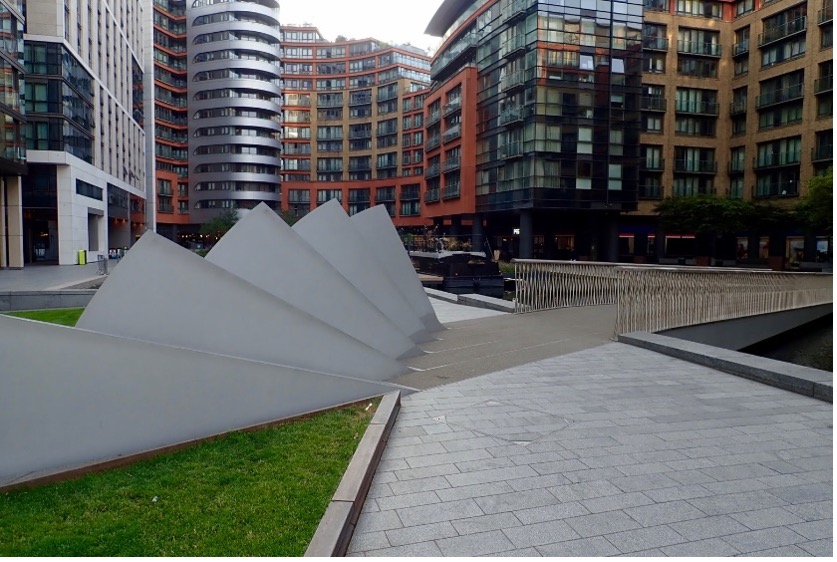
New apartments, offices and the Fan Bridge at Merchant Place in Paddington Basin, the ‘Paddington Arm’ terminus of the Grand Union from Birmingham.
The canal ahead of the lifting Fan Footbridge is cordoned off so you can’t actually put in here. Along with the similar Rolling Bridge nearby, a cynic might say these are eye-catching engineering solutions to non-existent problems. The bridges make scheduled performances on weekends.
The Paddington Arm of the Grand Union. Regent’s Canal actually starts by the former barge turning point known as Browning’s Pool; today’s Little Venice.
Just up the way below a footbridge is a strange retracting weir whose purpose may be to keep the scourge of duckweed from spoiling Paddington Basin’s clear-water vibe.
You can put in anywhere around here but…
Maida Hill Tunnel
Before you start assembling your boat, know that in about 5 minutes you’ll need to backtrack from and portage around the 250-metre-long Maida Hill Tunnel which is closed to ‘non-powered craft’. And it’s not a quick 250-m hop-around either. Because of a private towpath along Blomfield Road, and closures for repairs, currently it’s nearly a mile before you re-access the water below the Casey Street footbridge east of Lisson Grove. Knowing this, you may prefer to do as I did, and walk to (or start from) Casey Street Footbridge, about half a mile north of Marylebone tube.
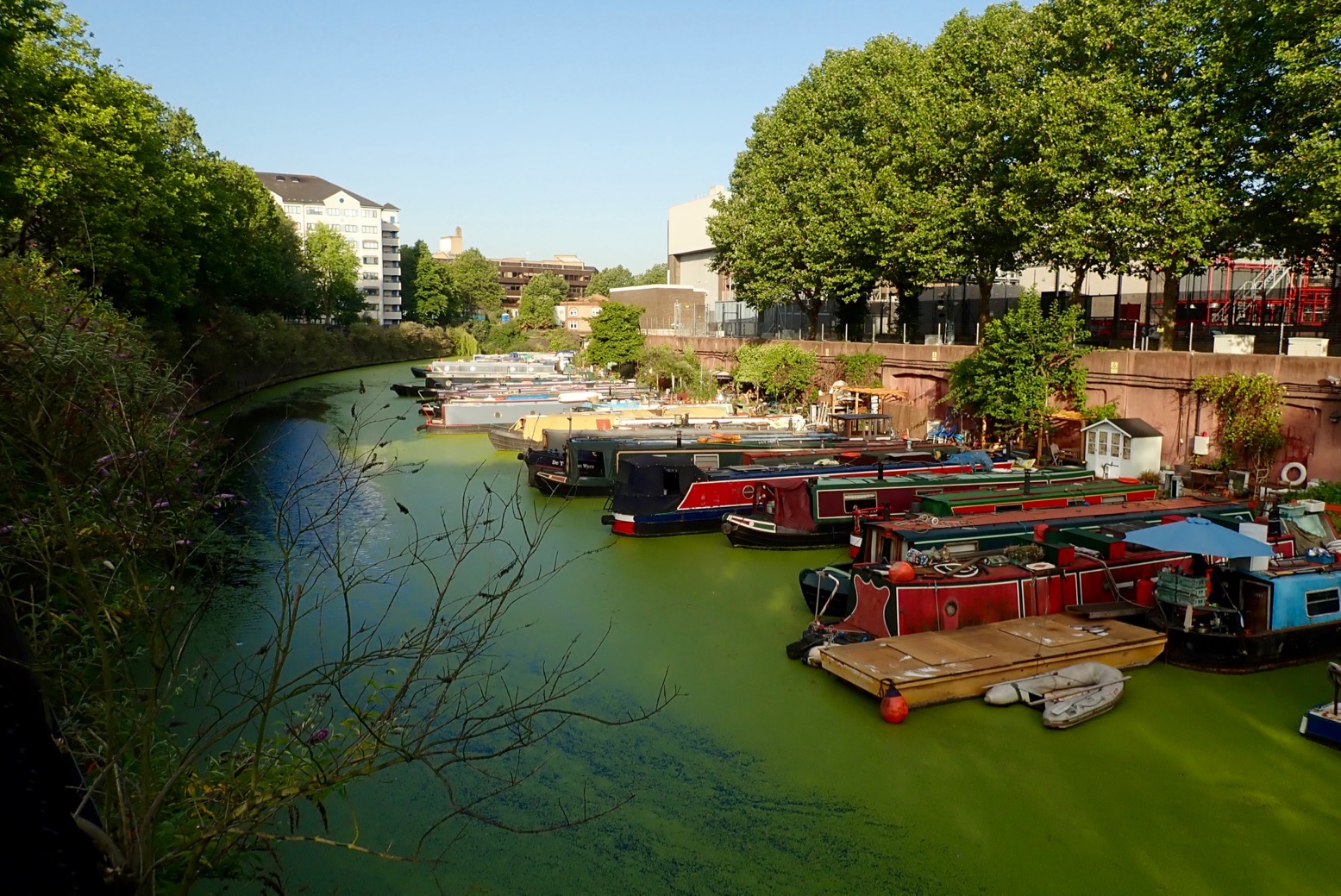
Long story shortened a bit, I enjoyed my exploratory walk and finally got to air-up my MRS Nomad below Casey Street footbridge looking down on the Lisson Grove Mooring (aka Marylebone Wide).
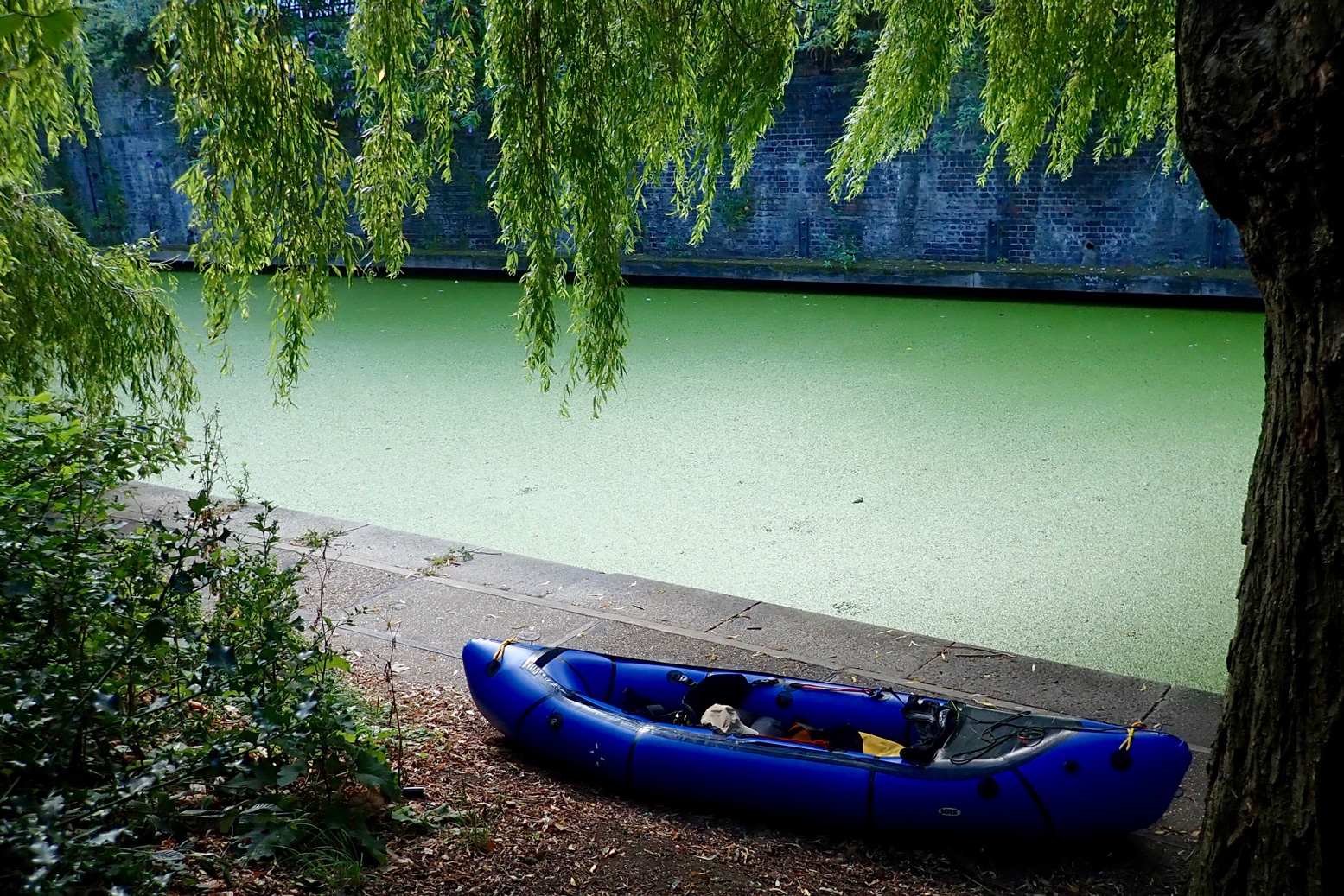
The canal surface was thick with a lush carpet of floating pennywort or, as I prefer to call it, Hydrocotyle ranunculoides. This lurid green matting covered the canal from bank to bank just about all the way to Limehouse. At times it was so thick birds easily stood on it, but it didn’t noticeably impede my paddling.
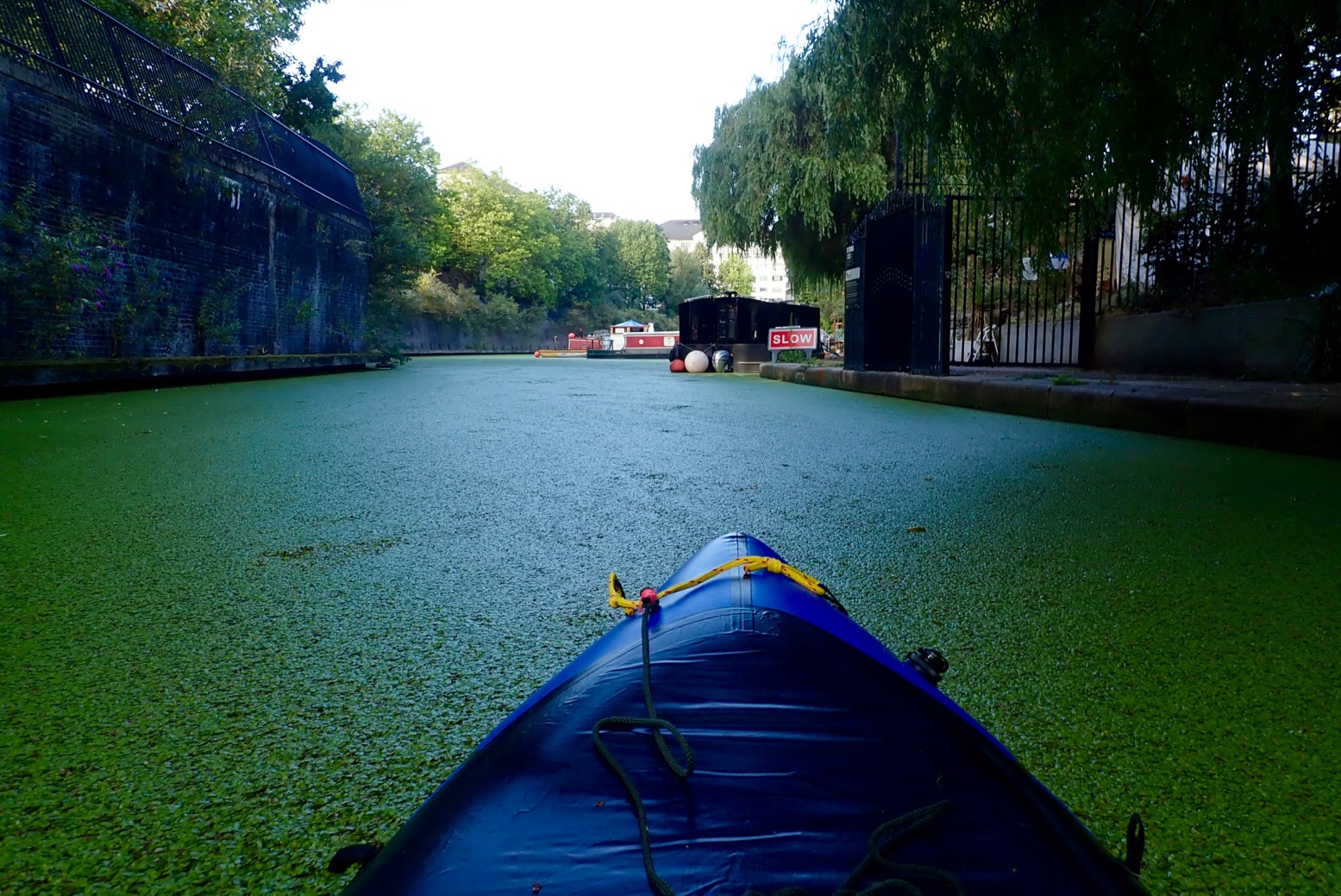
Once on the water I paddled back west, under the Lisson Grove or Eyre’s ‘tunnel’…
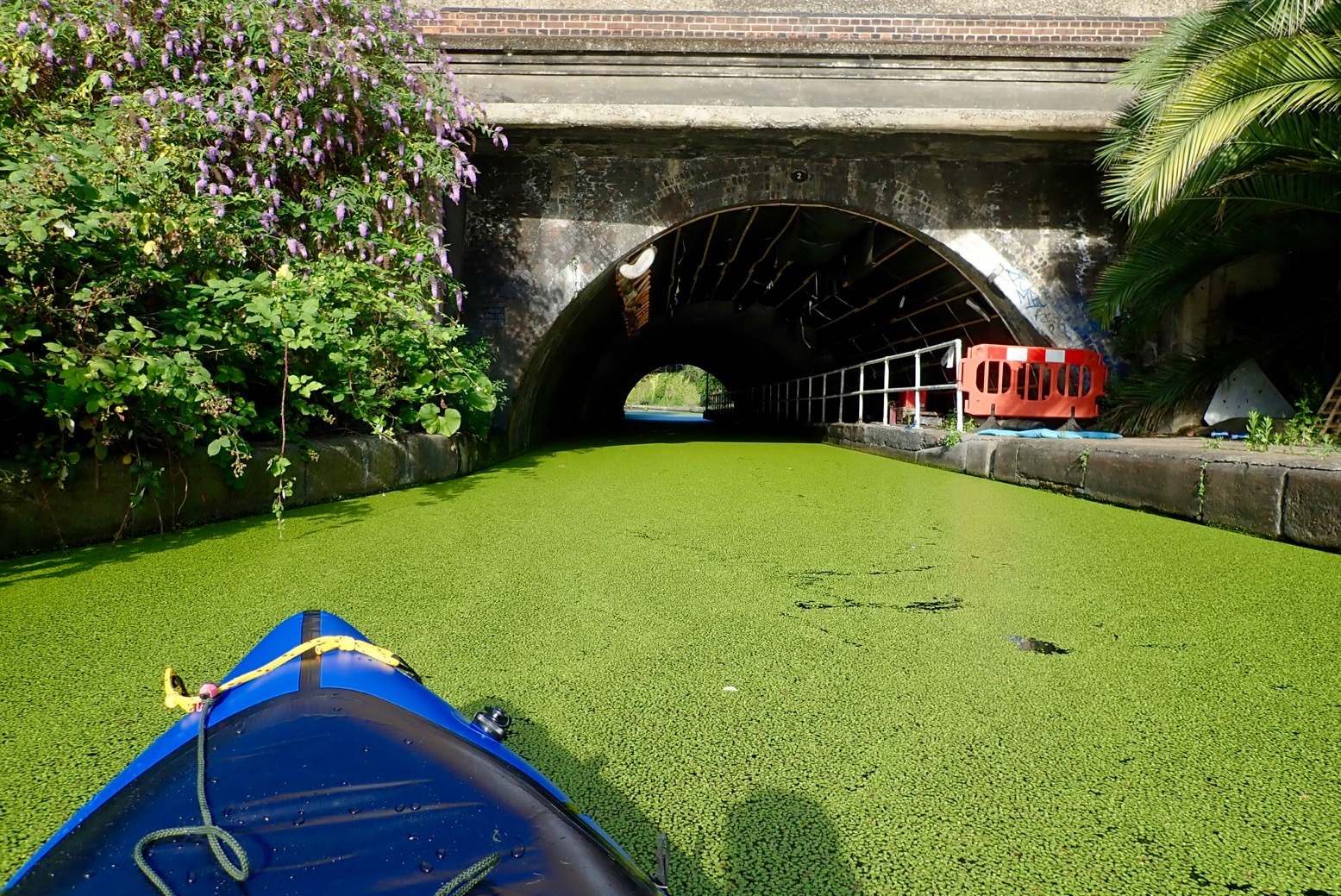
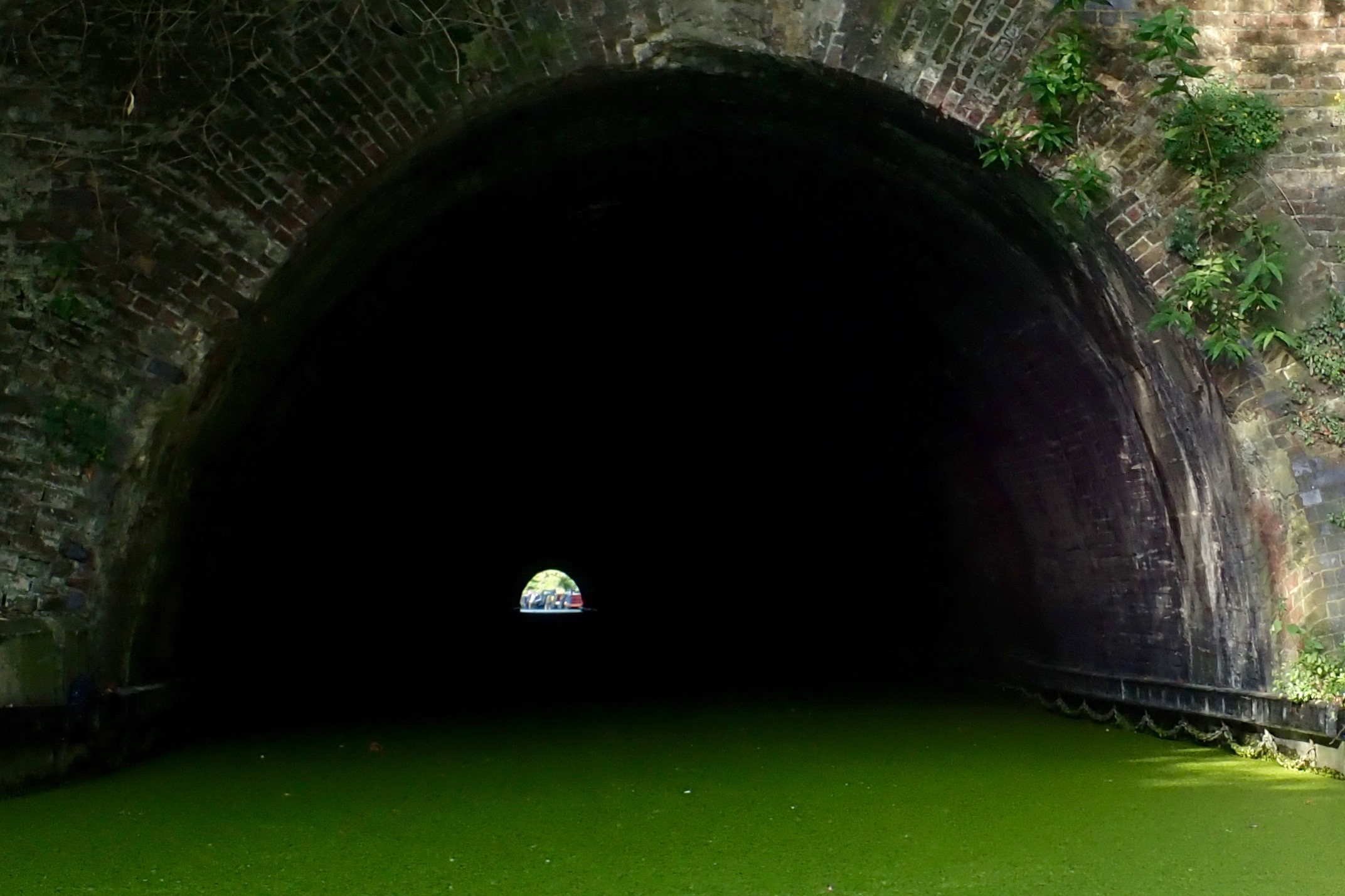
… for a peek at the eastern, ‘Doctor Who’, end of the Maida Hill tunnel. It didn’t look that far or that deadly.
Then I paddled back, passing nesting coots…
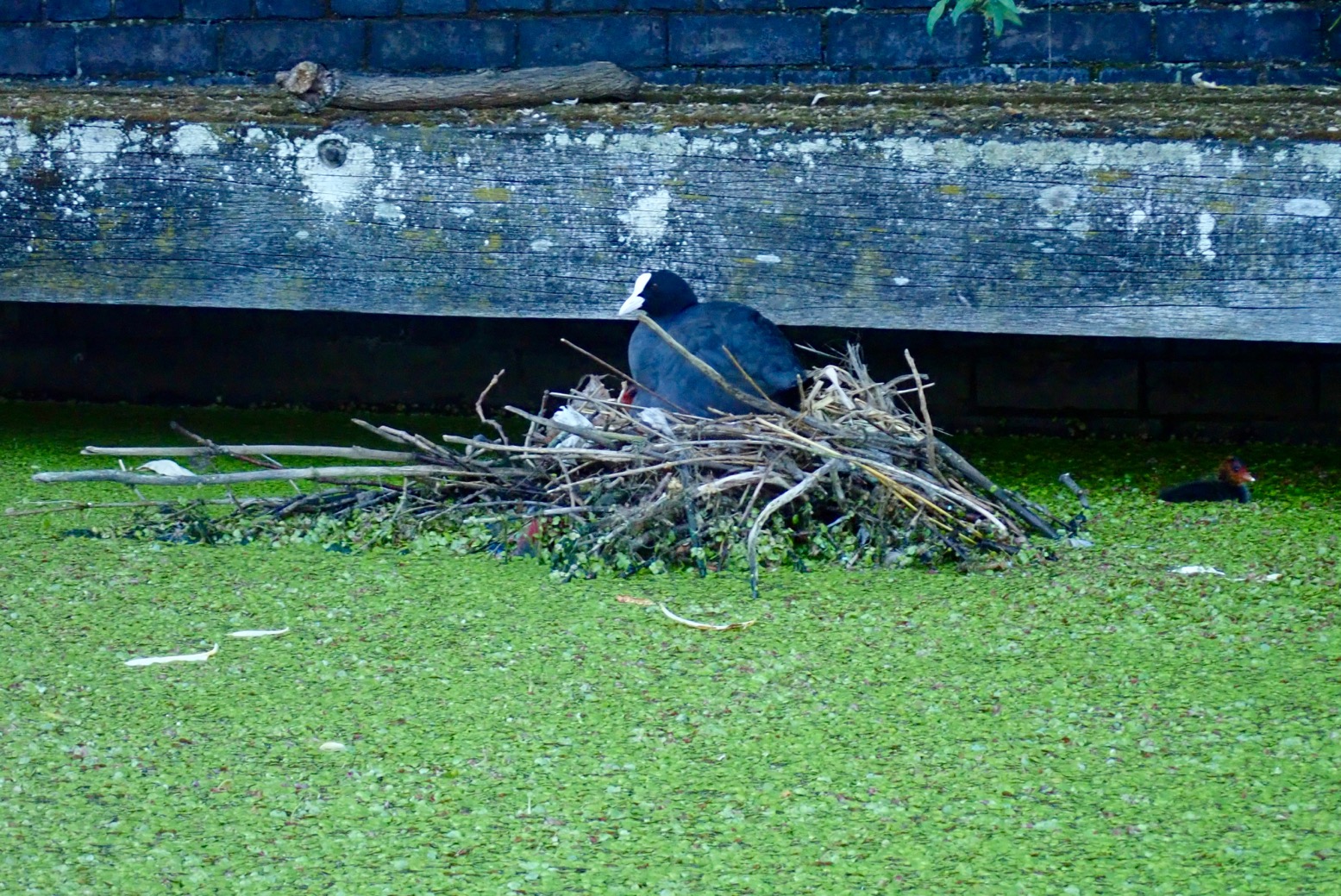
Under the Chiltern Line rail bridges and Park Road (A41).
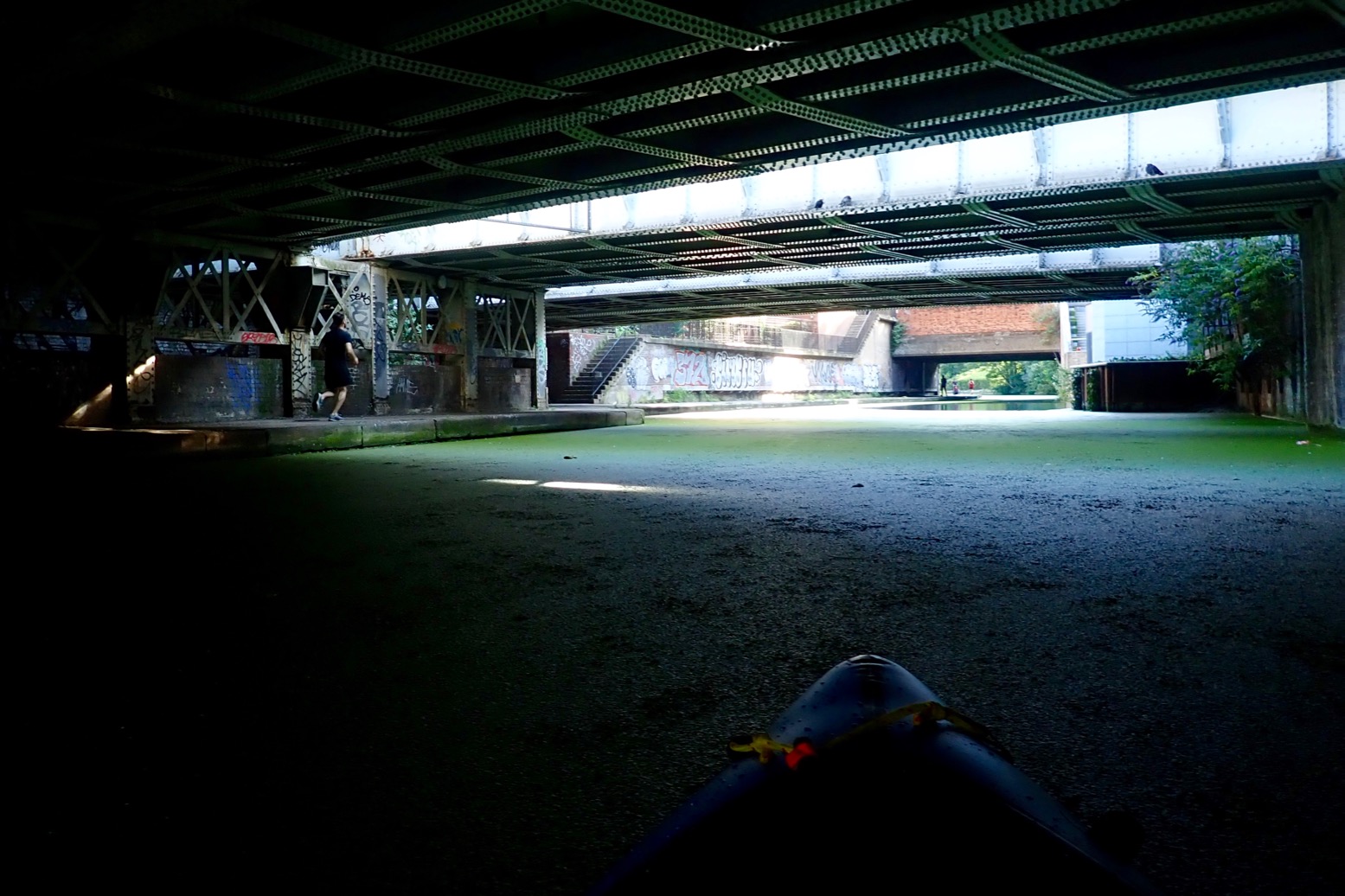
And into the bucolic enclave of Regent’s Park, passing elegant mansions and accompanied by a phalanx of pushbikers and joggers dashing and dodging other joggers and pram-pushing nannies.
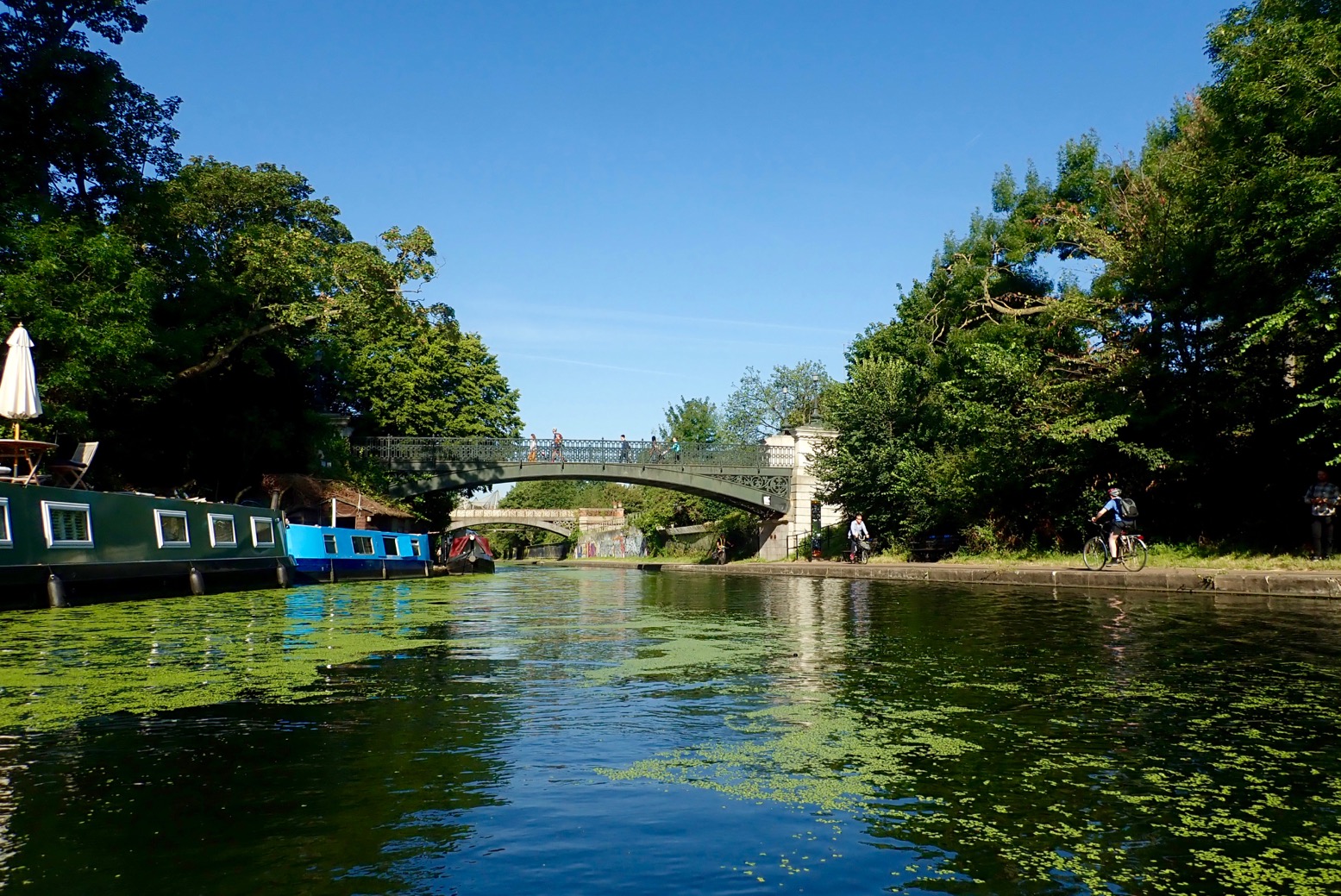
At London Zoo all was quiet. Not a squawk, a yelp or a roar.
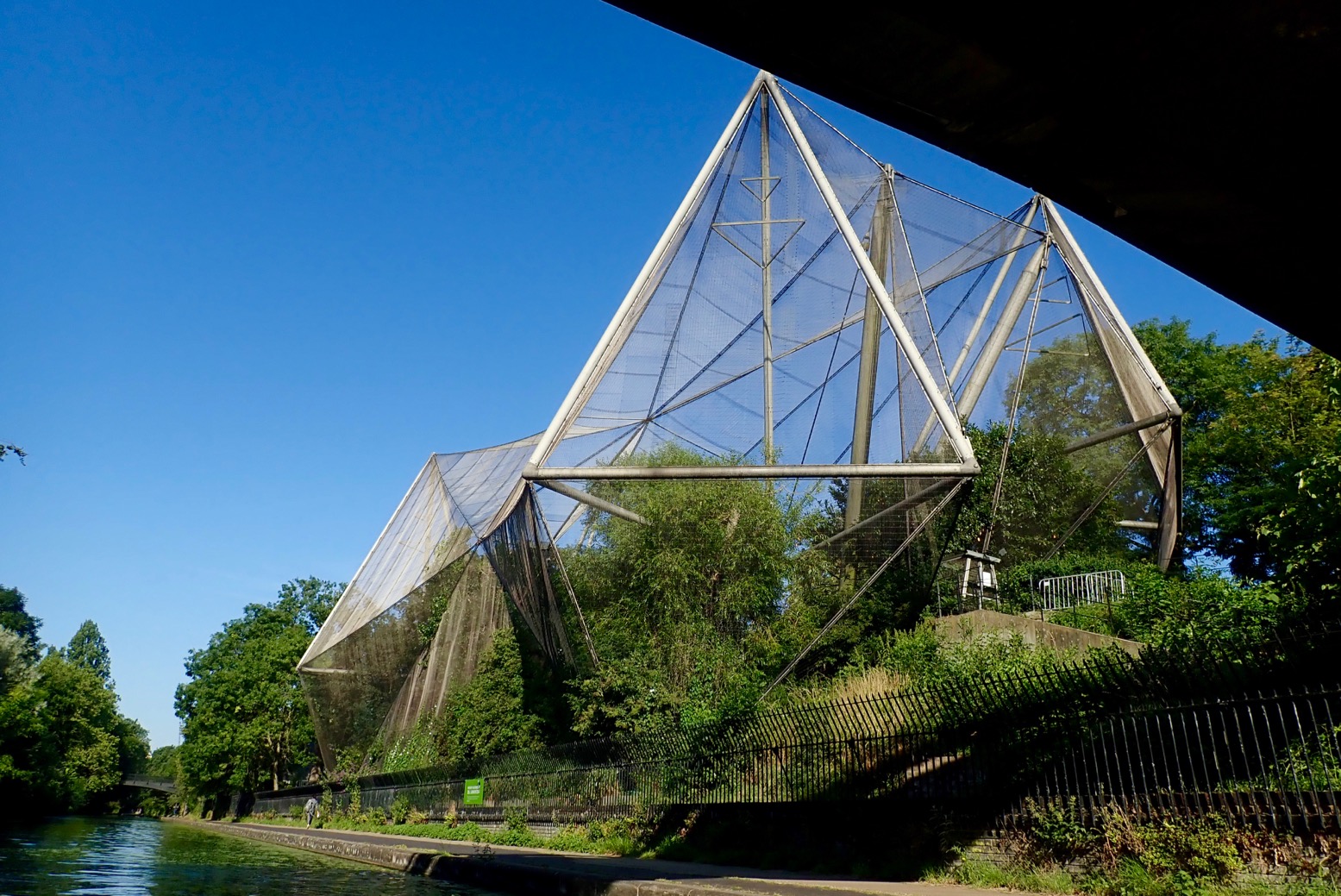
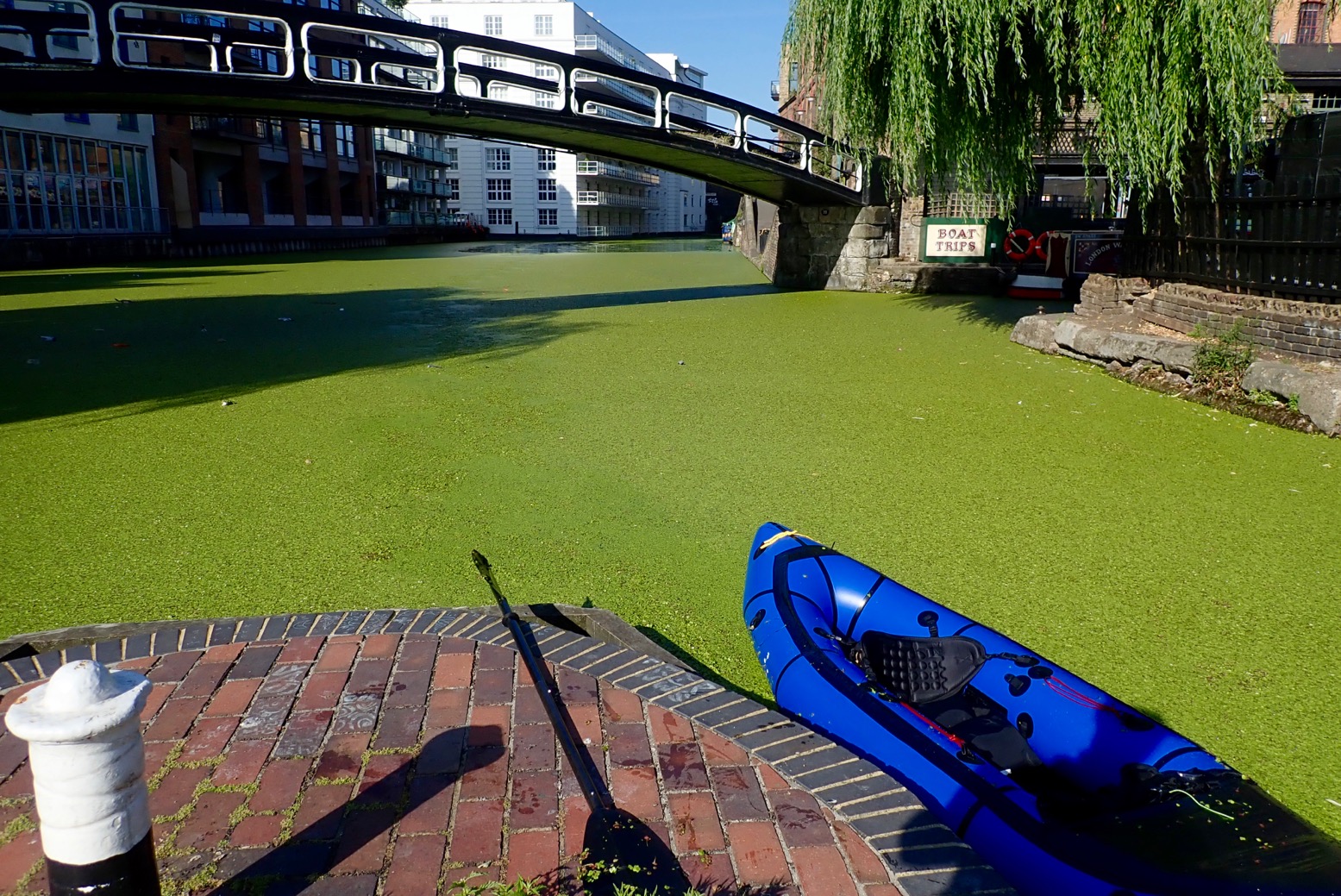
At now-filled in Cumberland Basin, by the famously top-heavy Chinese pagoda restaurant the canal, appropriately, takes a left turn into the borough of Camden.
Soon I arrive at Camden Lock Market but it’s too early on a weekday morning for the place to be busy with beret-wearing tourists.
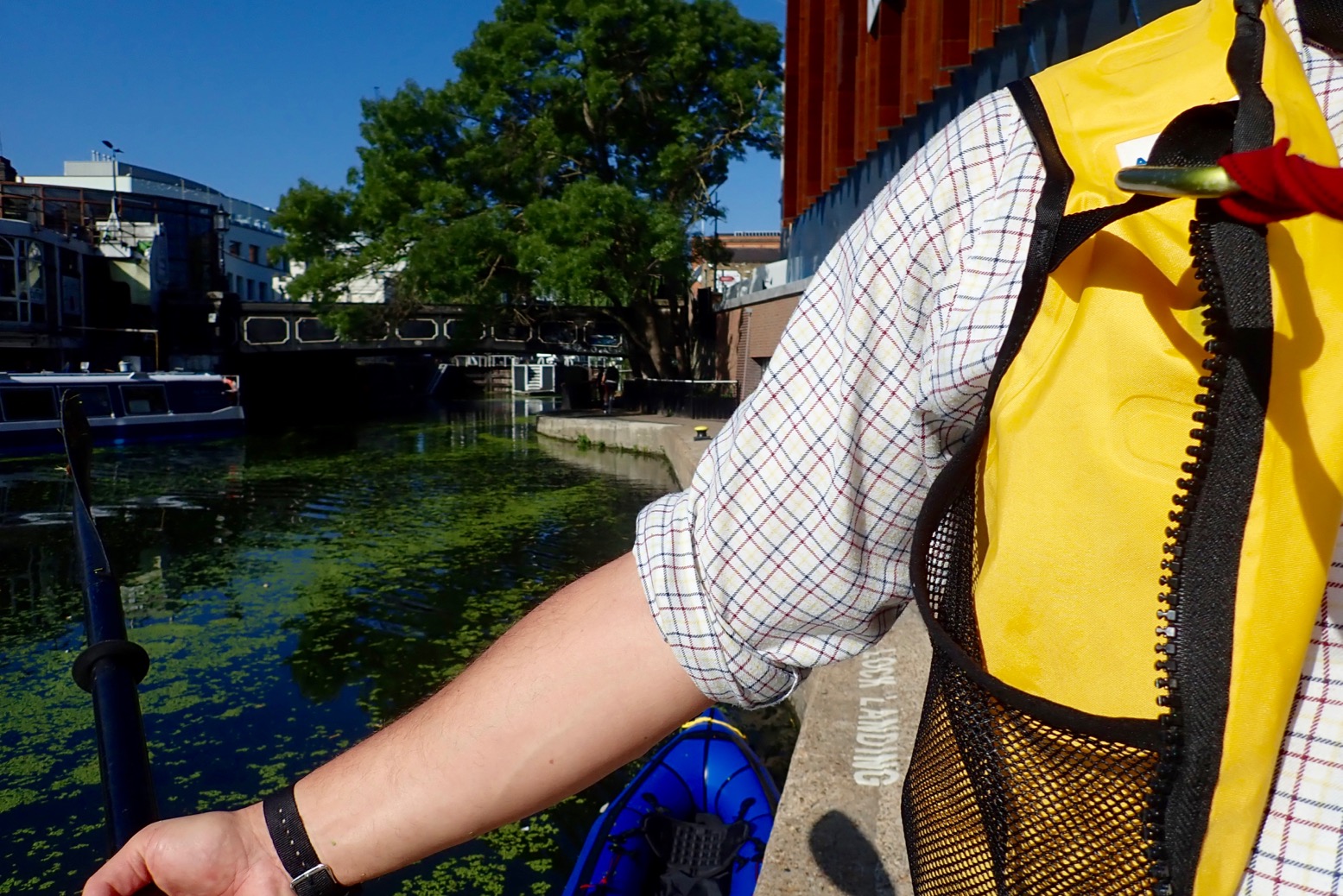
There are three locks here in less than 300 metres, so I line the boat along the bank like a Yukon voyageur.
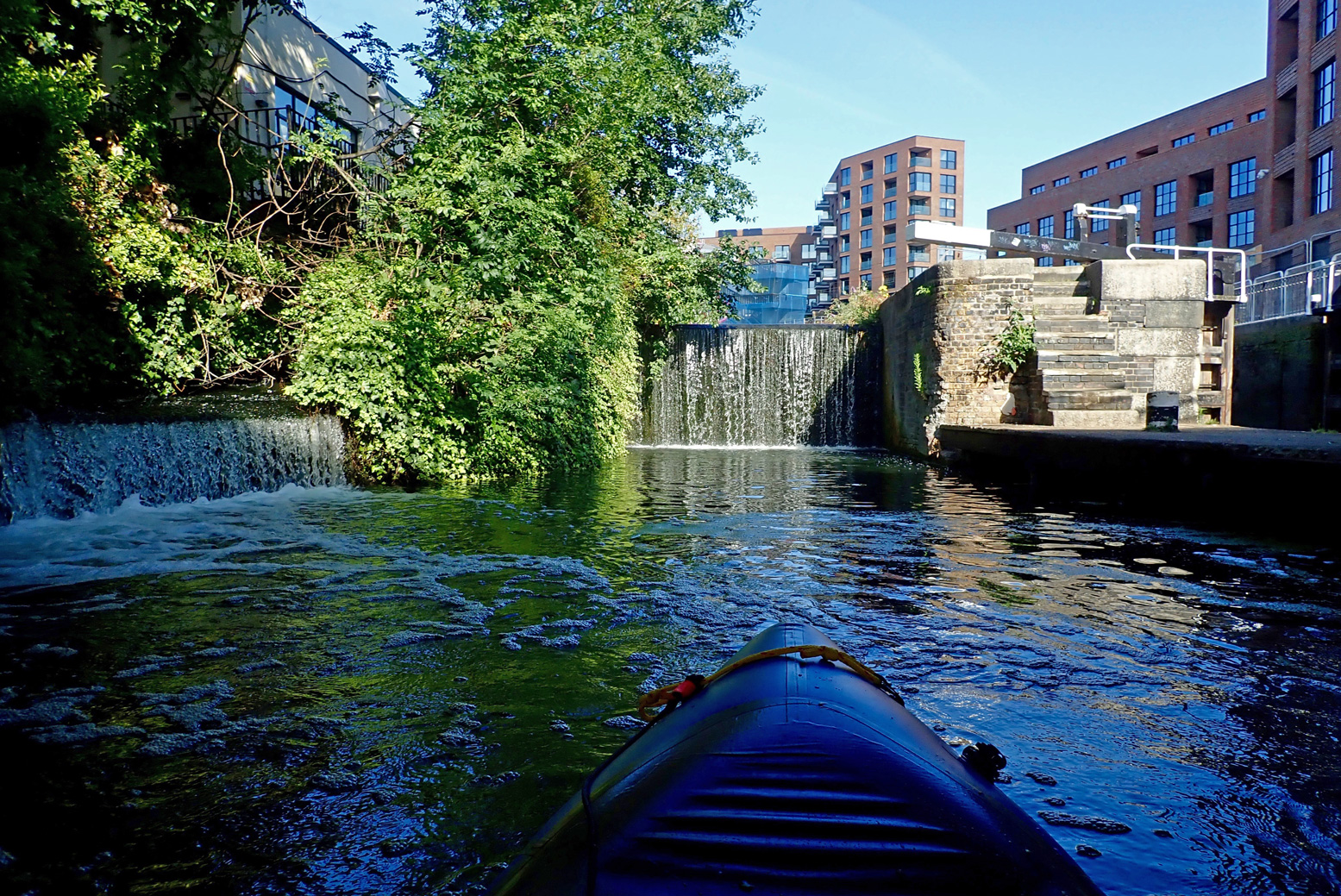
I paddle away from trendy Camden and soon pass under the deafening Eurostar rail lines at St Pancras before entering what they now call Gasholder Park. Old Kings Cross is long gone and some of the gas storage tanks have been turned into flats. Welcome to trendy Kings Cross.
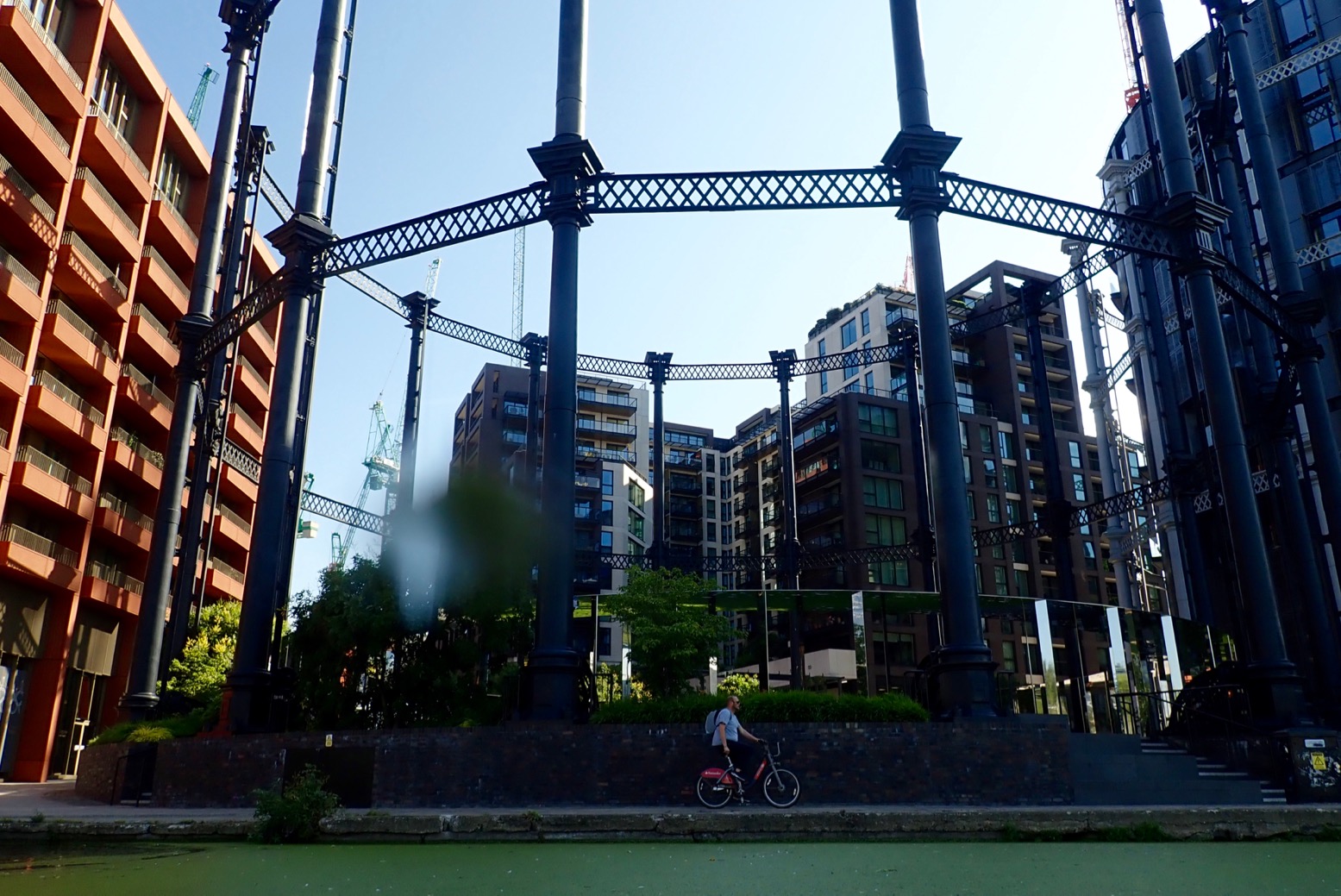
I can’t quite square where I am with what lies around. I think perhaps it was all once a huge goods yard behind high walls. I swing into Battlebridge Basin but the museum isn’t open yet.
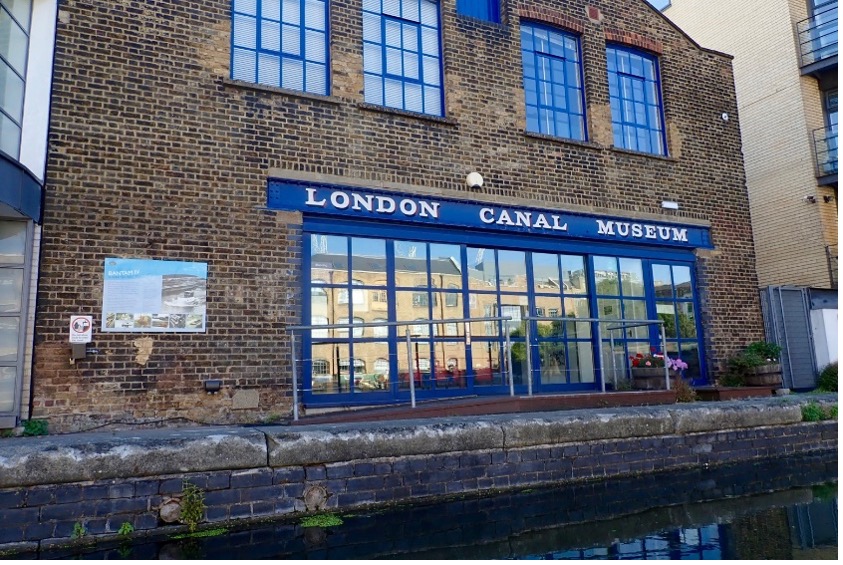
Up ahead is the 880-metre-long, Islington Tunnel. Again, as straight as a pick-axe handle but closed to hand-powered boaters for similar reasons as Maida Hill. I was kind of hoping a barge might rock up and let me hook on for a lift, but the only things I’ve seen on the water are wildfowl, plastic bottles and Spirodela polyrhiza.
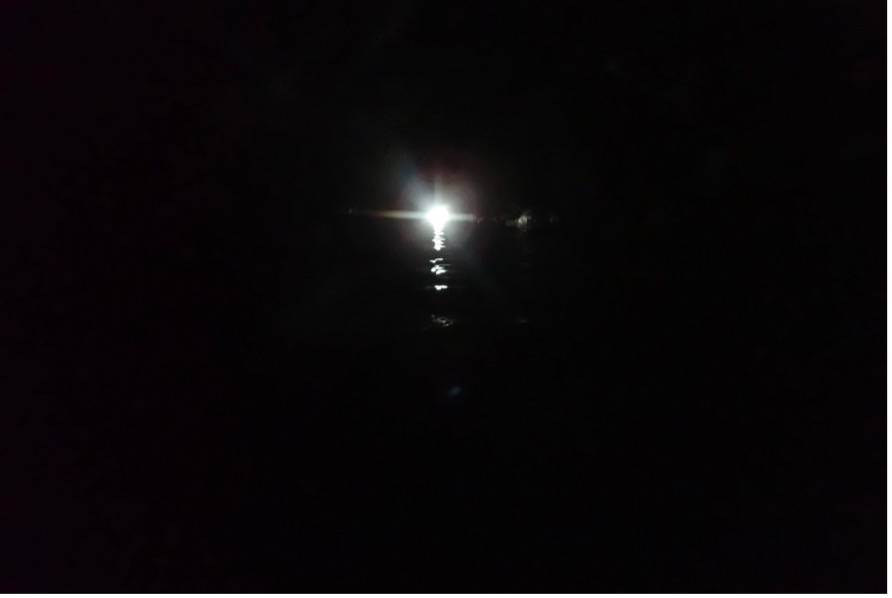
I read that the portage follows helpful plaques set in the pavement. Cross the A1, Upper Street and head for Duncan St. It’s about a kilometre and would be somewhat of an arse-ache in a hardshell. Either way, I emerge at the eastern portal…
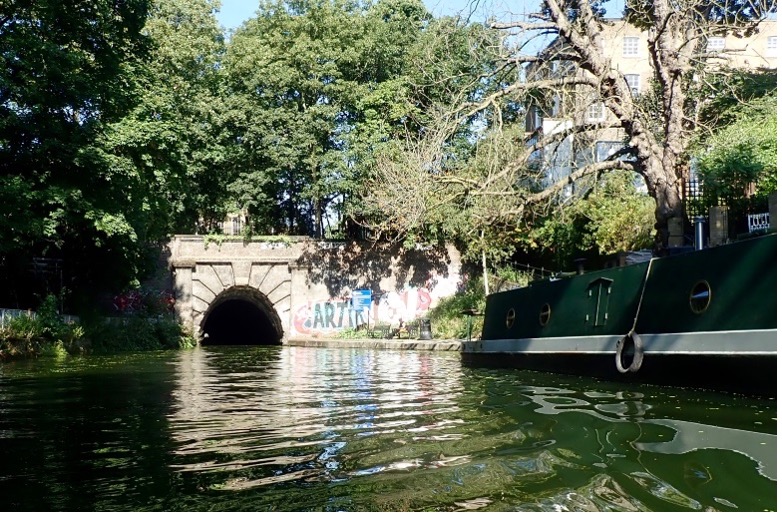
… and in need of a waterside snack at City Road Lock. It’s only 9.30.
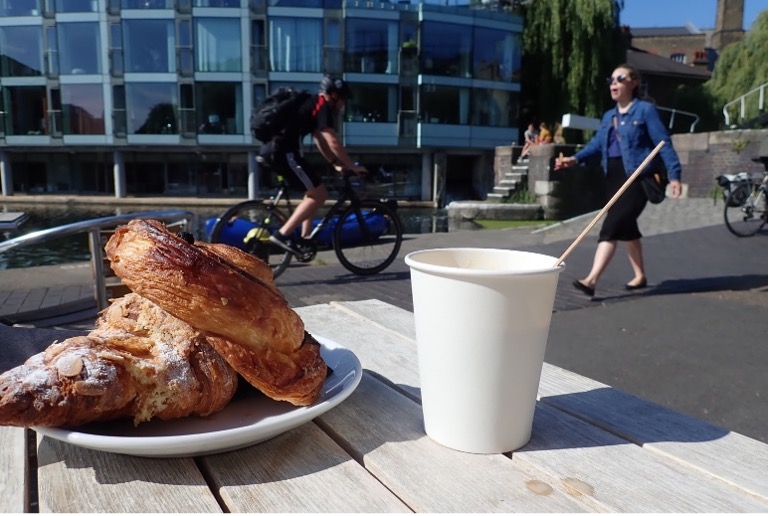
By 10am I’m refreshed and on the move again. I put back in below the lock with a plop.
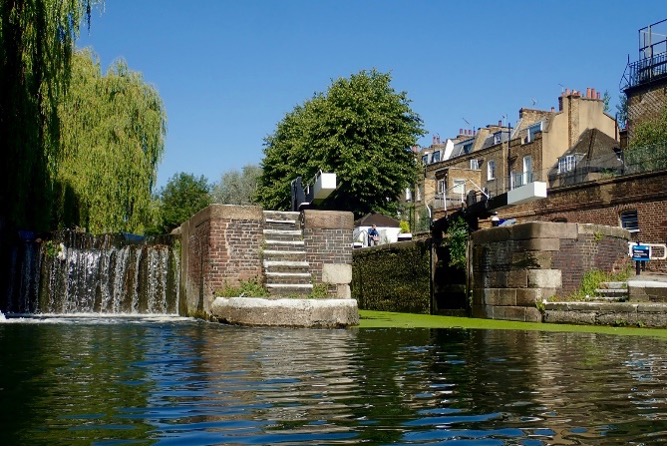
The canal turns north into Haggerston where, just after the Whitmore Road bridge, there’s a handy knot of cafes on the left. A better choice than City Lock if you want more than coffee and cake. It’s all yummy mummies round here, not the snarling bottle-throwing punks I’d feared.
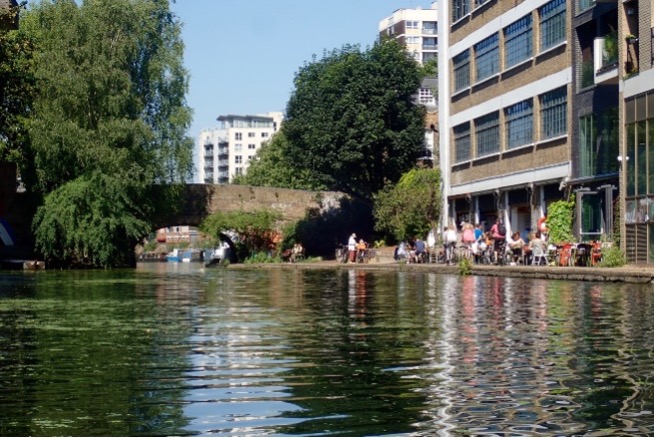
Kingsland Basin to the north, with a somewhat baffling kayak slalom course. Soon you pass under the Kingsland Road bridge, edging ever closer to south Hackney.
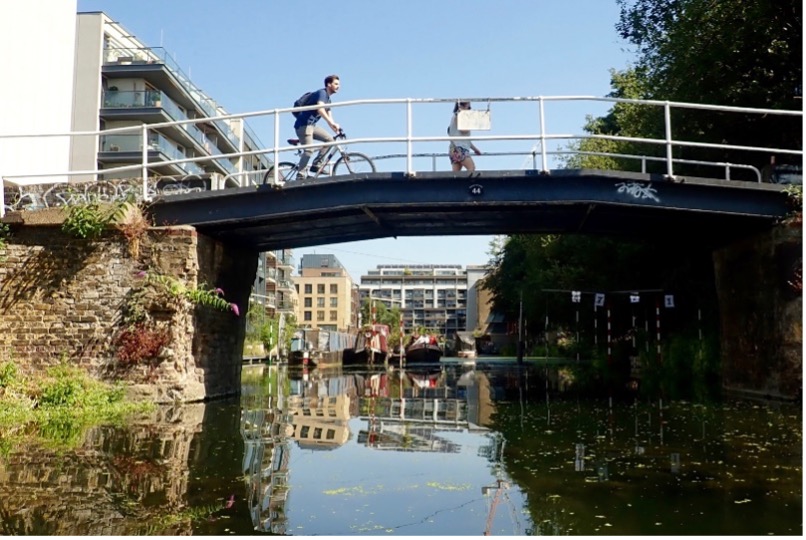
The canal is actually about 4 feet deep. near here I can see traffic cones and other junk on the bottom. But a prod with the paddle reveals two centuries of anaerobic silt, so don’t expect to be able to stand if you fall in.
More gas holders near Cambridge Heath Road. You always find them near waterways as the huge tanks need to float on water.
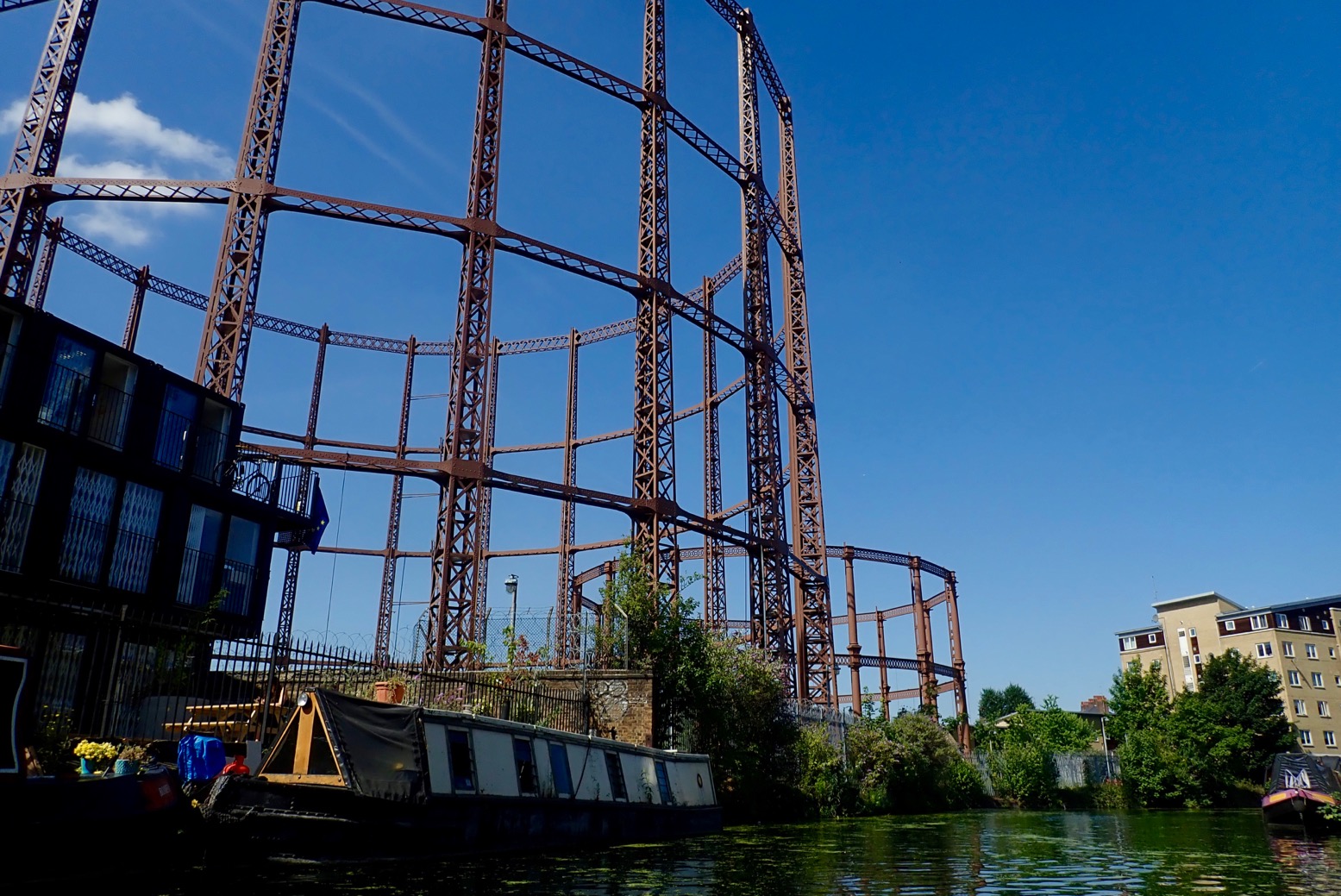
I’m approaching Victoria Park near Bethnal Green or South Hackney, it’s hard to tell. The precise name of your neighbourhood is very important to Londonders.
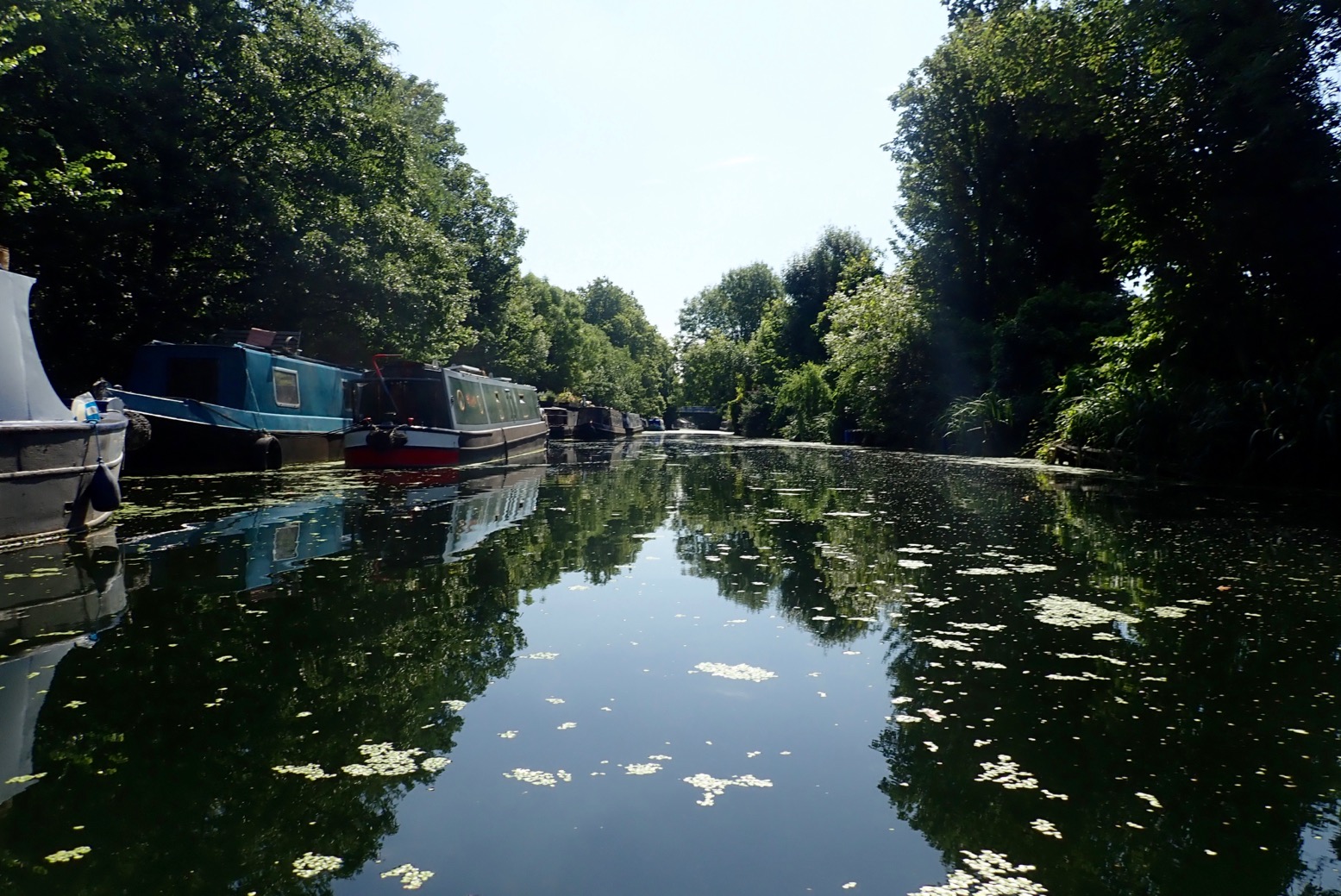
By Old Ford Lock (named after a car they dragged out of the canal) are the first canal-side public toilets I’ve seen. Good to know. A nutty, bin-rummaging vagabond in a top hat has a quick chat and warns me of heavy weed ahead.
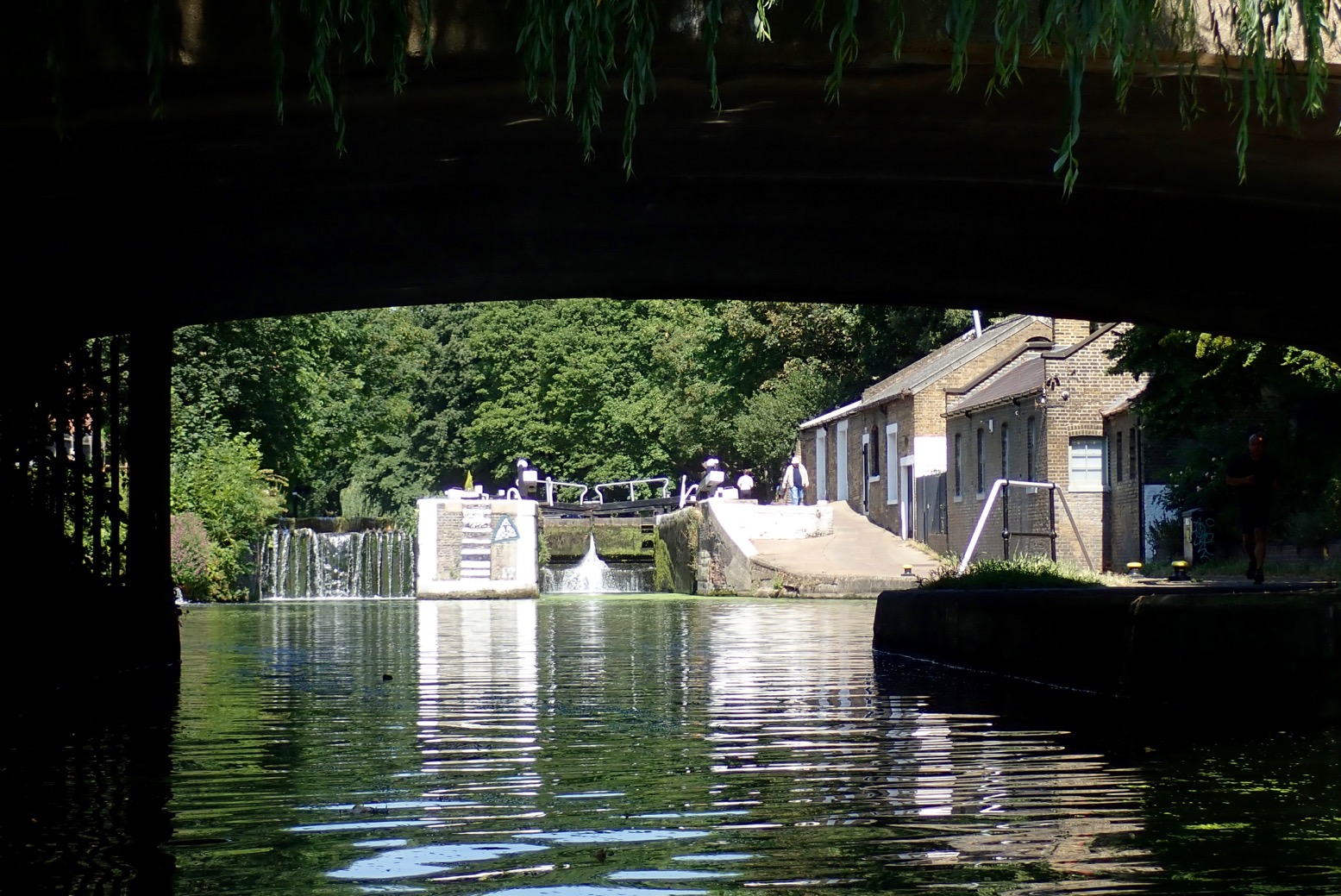
On the left the Hereford Union which leads two clicks up to the rejuvenation Olympic Park and the River Lee Navigation. We’ll be exploring there shortly.
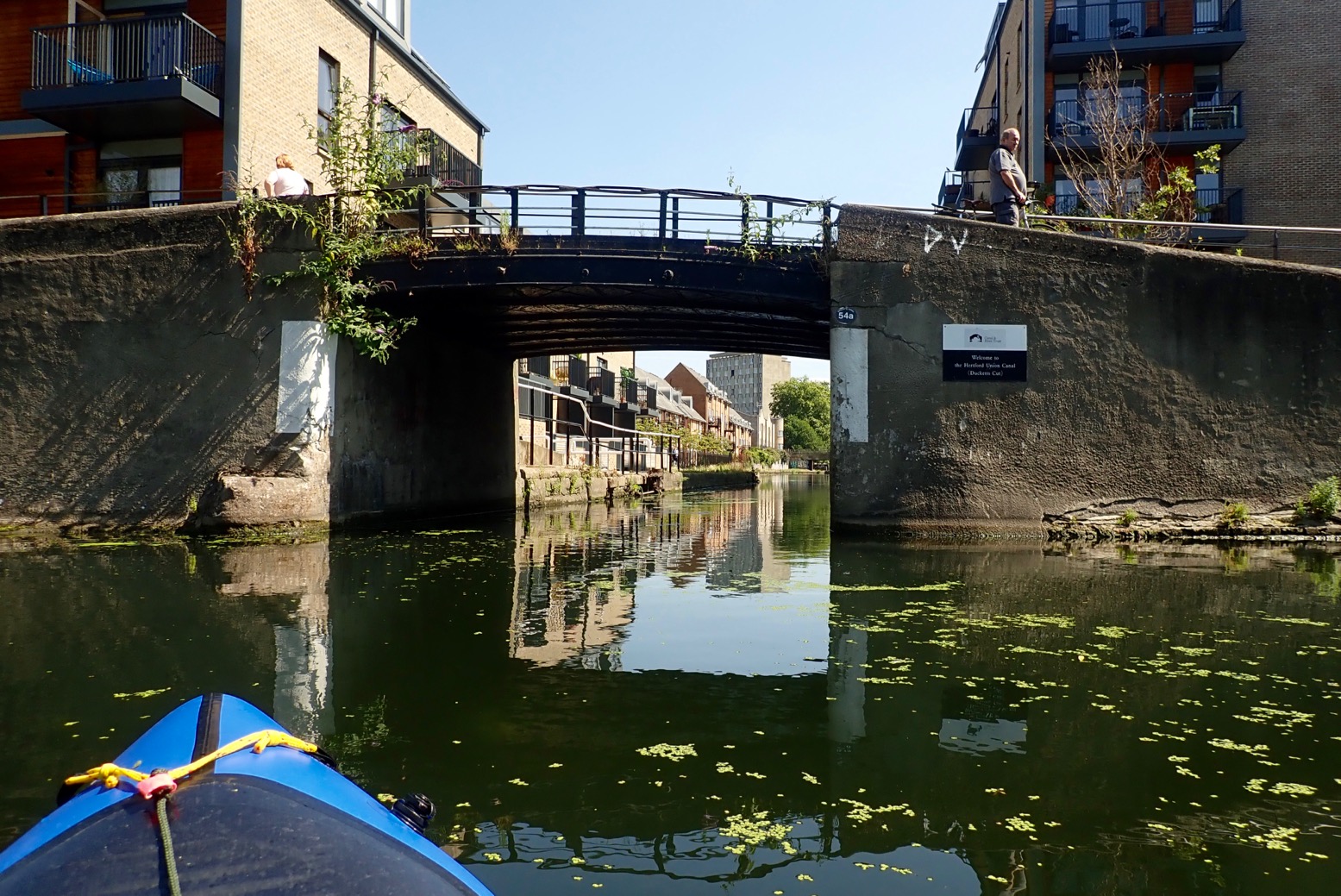
Architecture-spotting: new, old, industrial, domestic, elegant, ugly – is all part of the fun on the Regent’s.
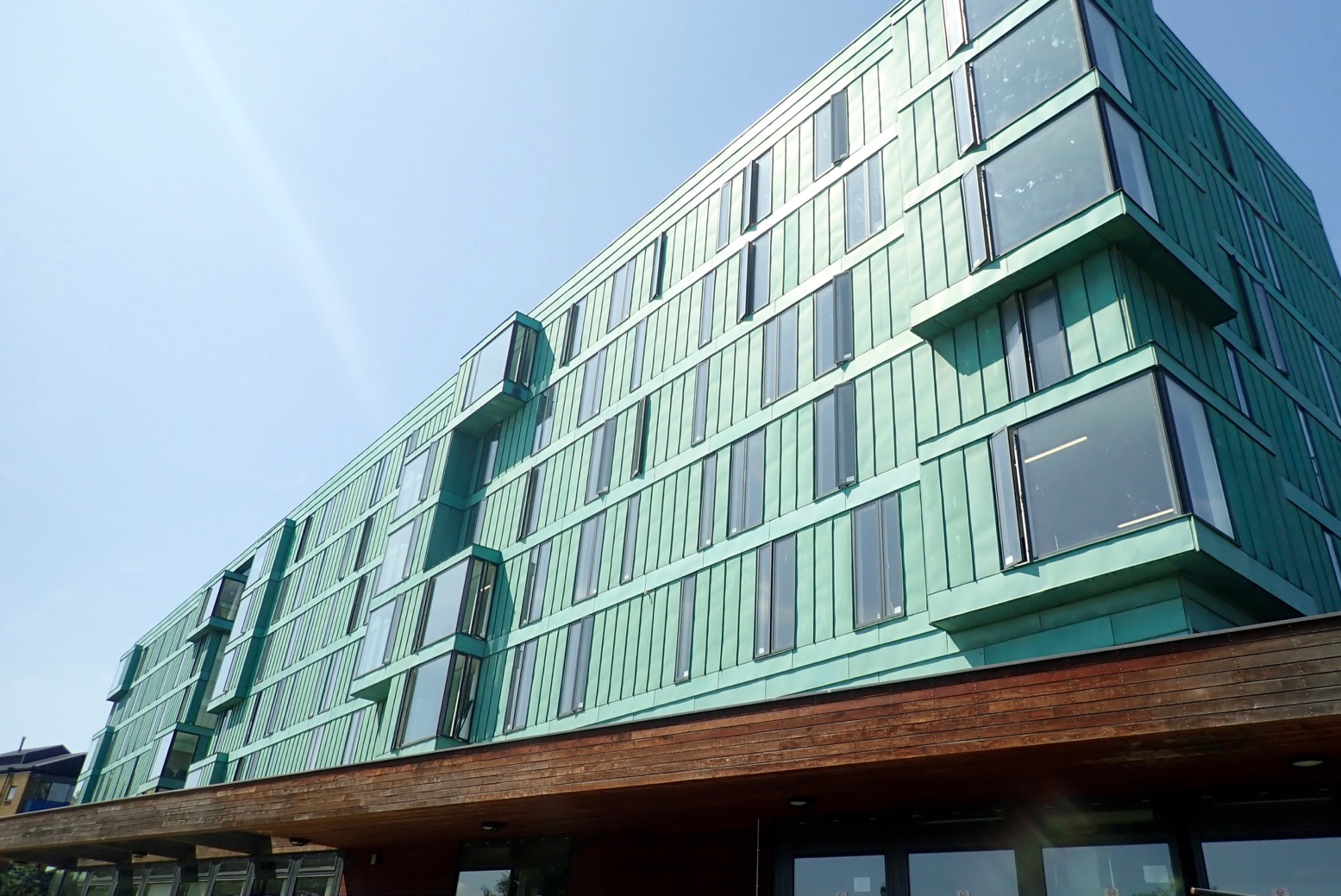
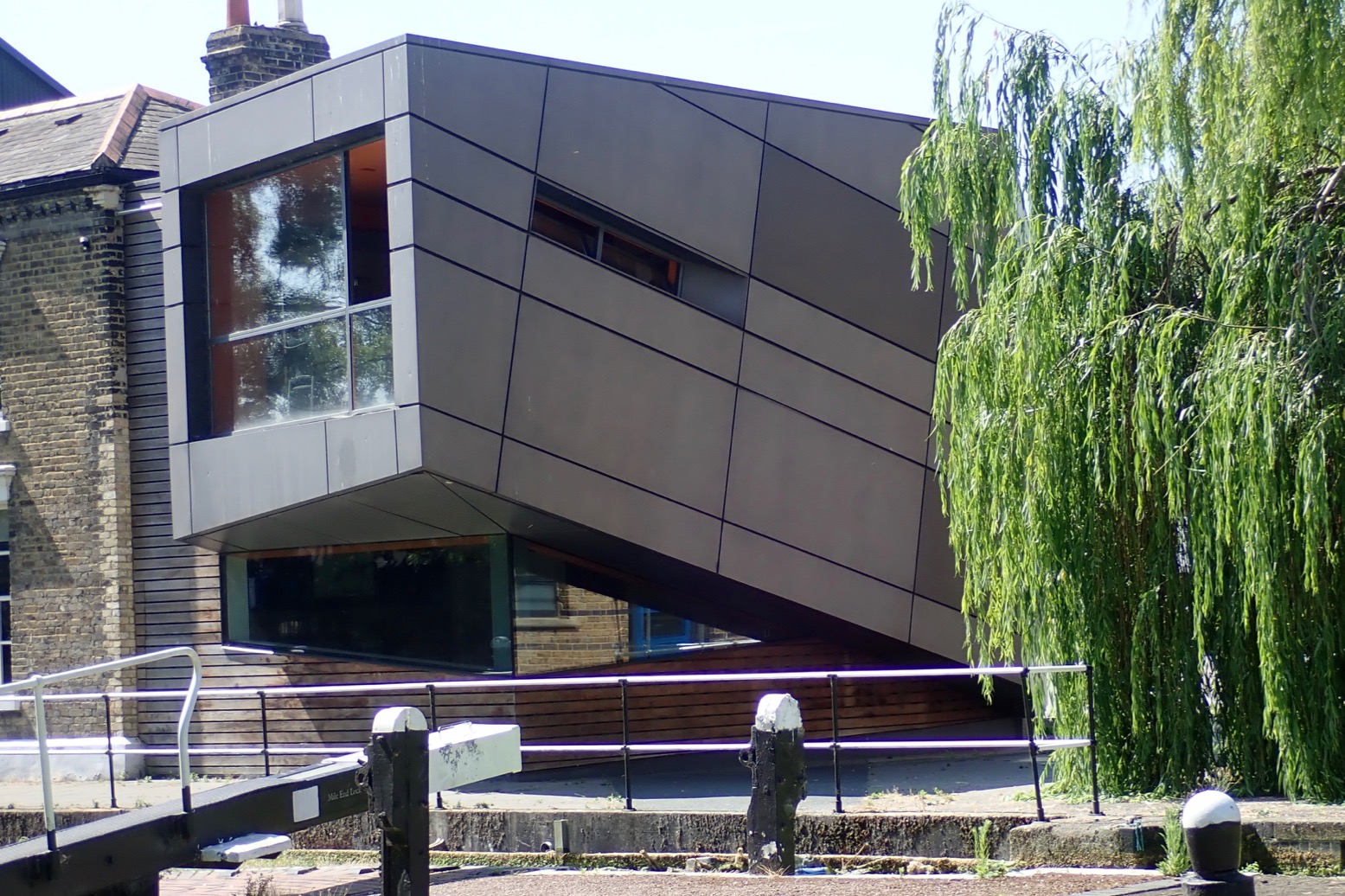
I probe a weed-clad lock. Locks are creepy places.
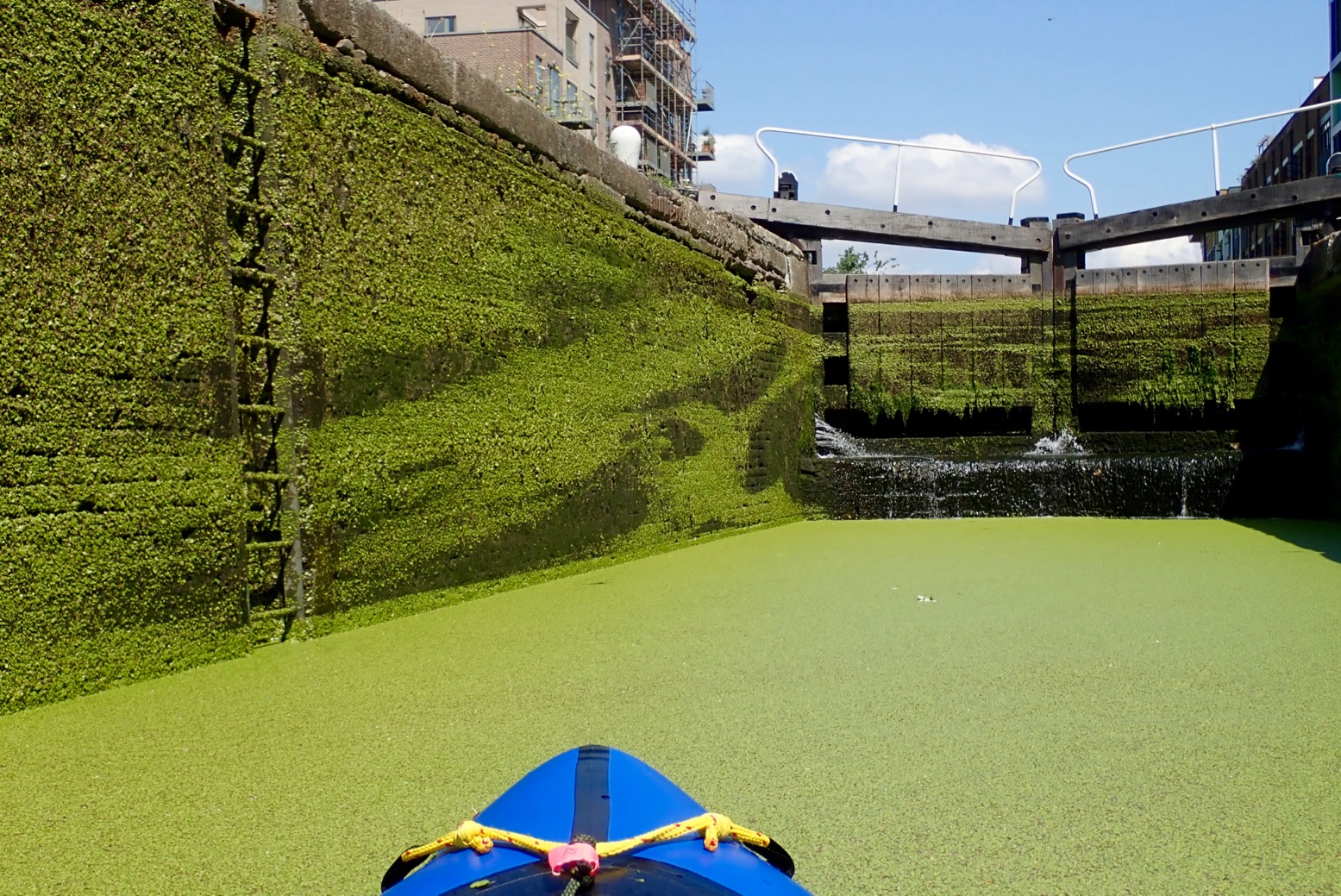
Canary Wharf ahead – the former Docklands of London which was the Regent’s’ very raison d’etre.
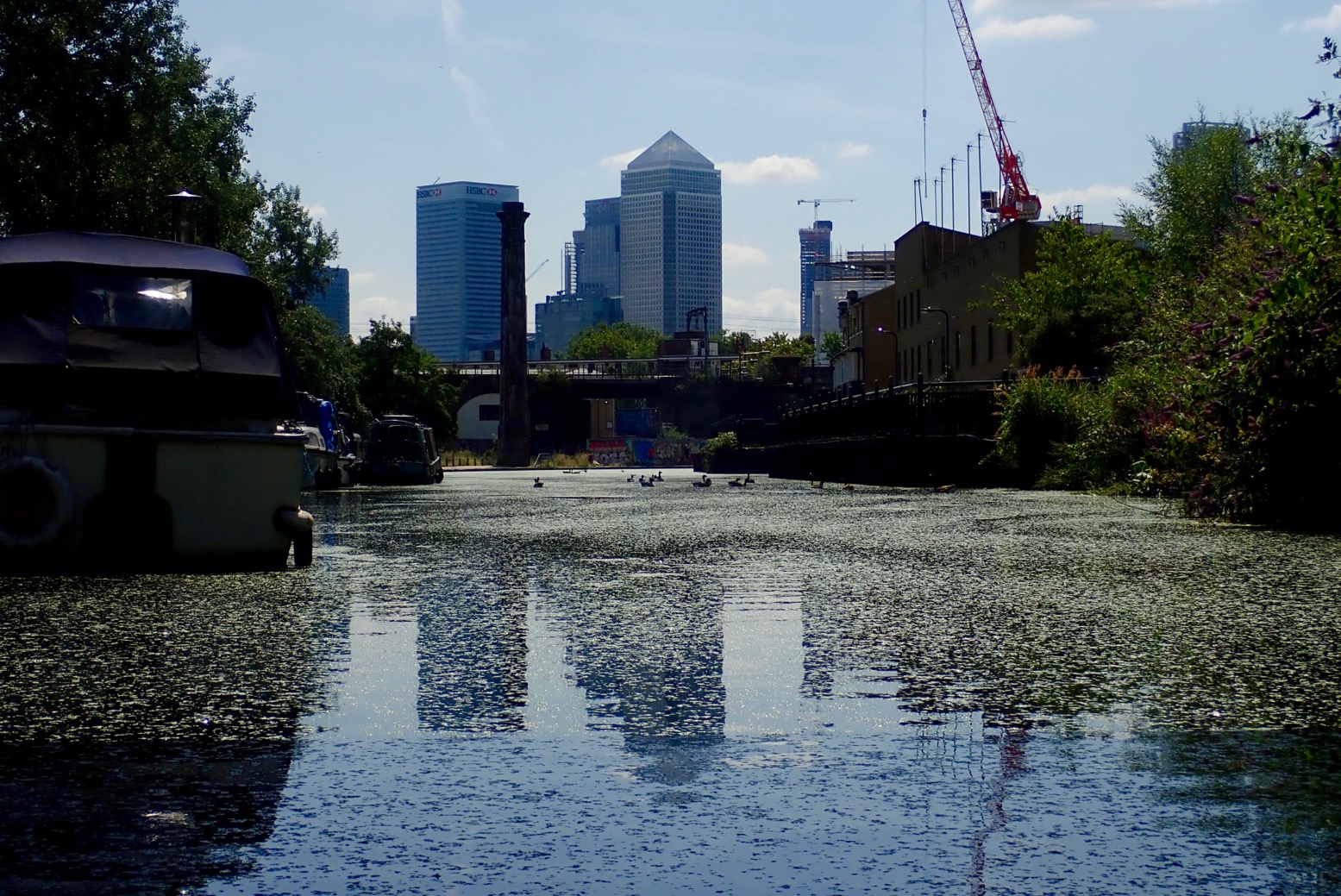
And here we are at Limehouse Basin and the first actual moving boat I’ve seen since Paddington.
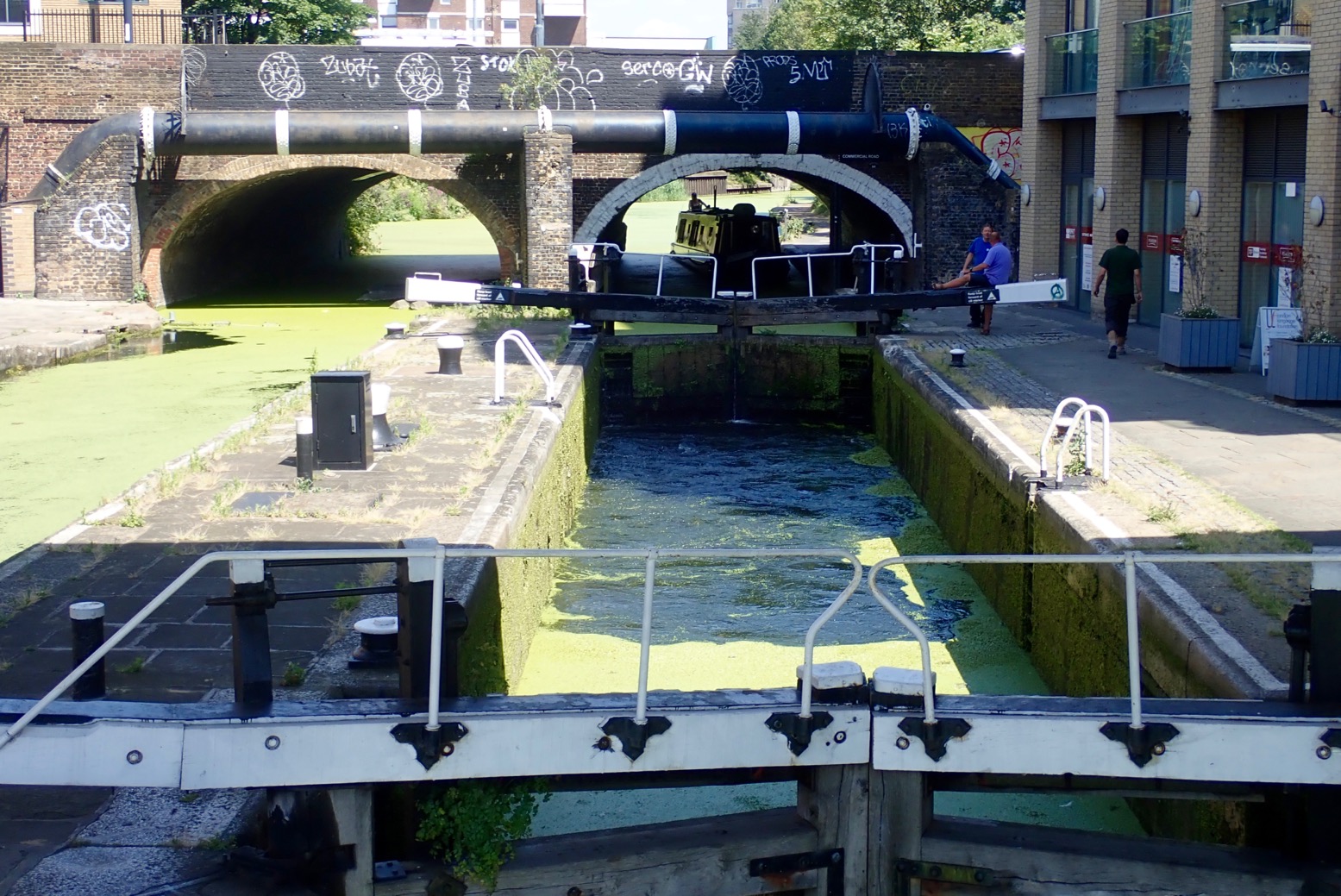
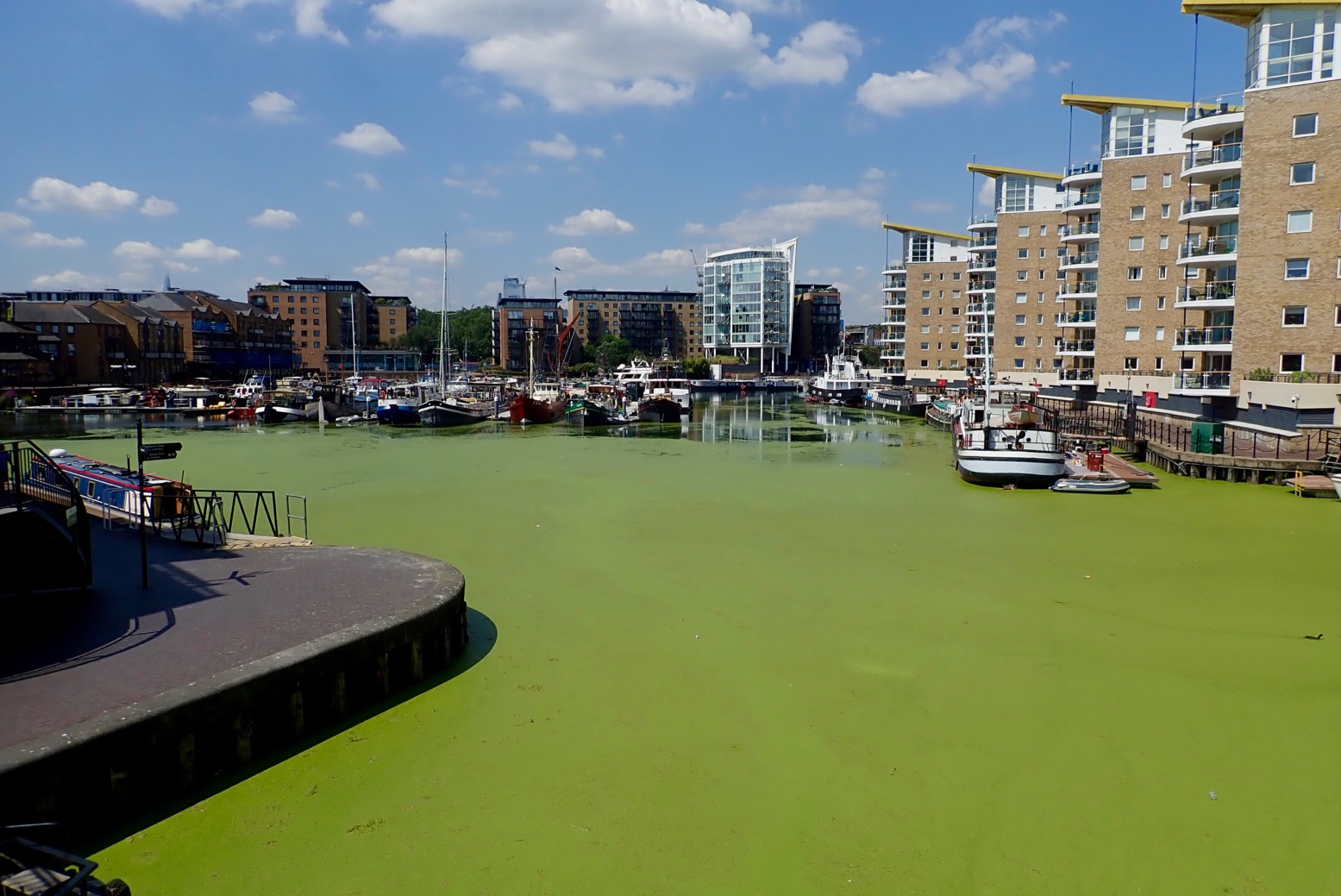
A lot of weed to clean off.
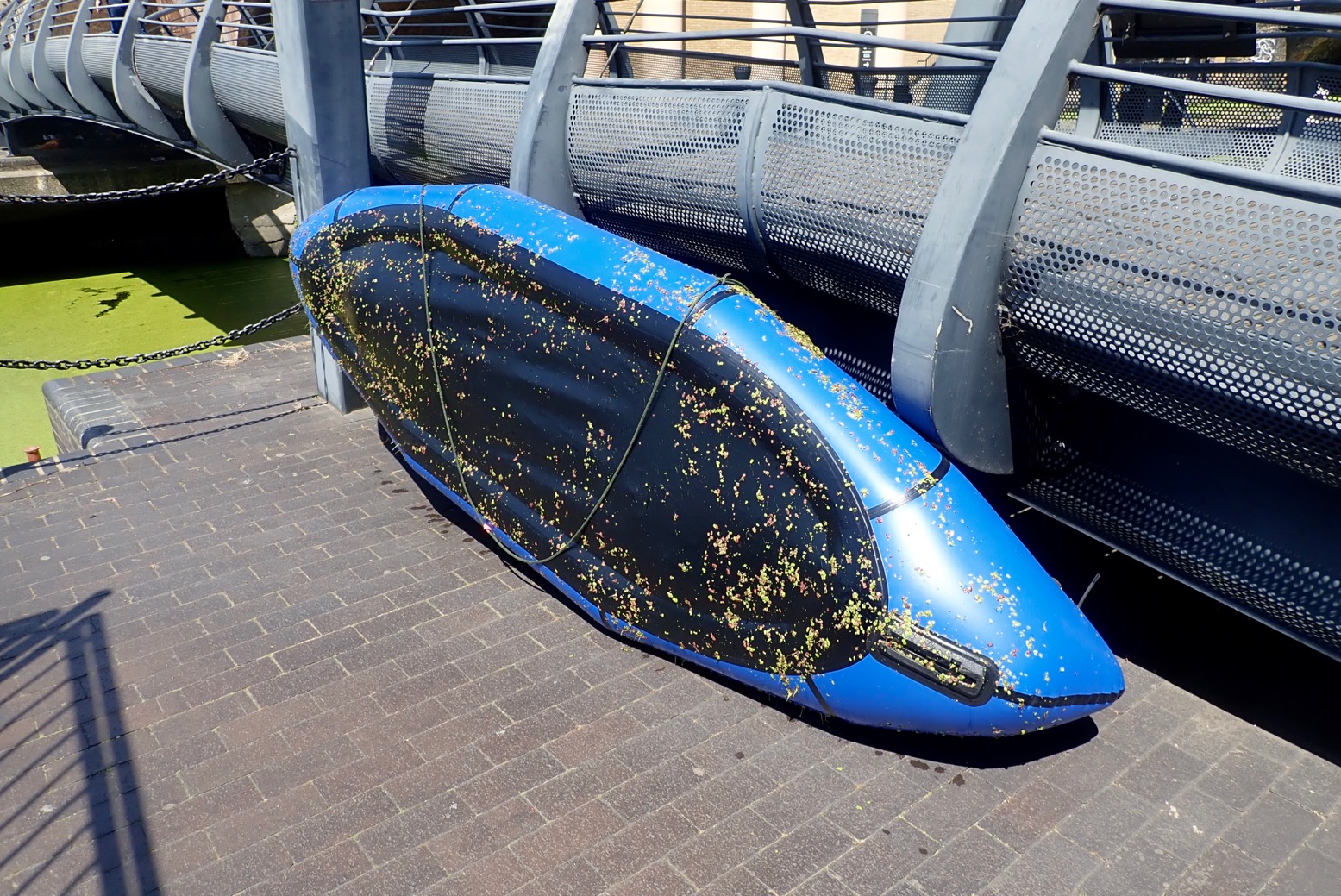
All wiped down and rolled up.
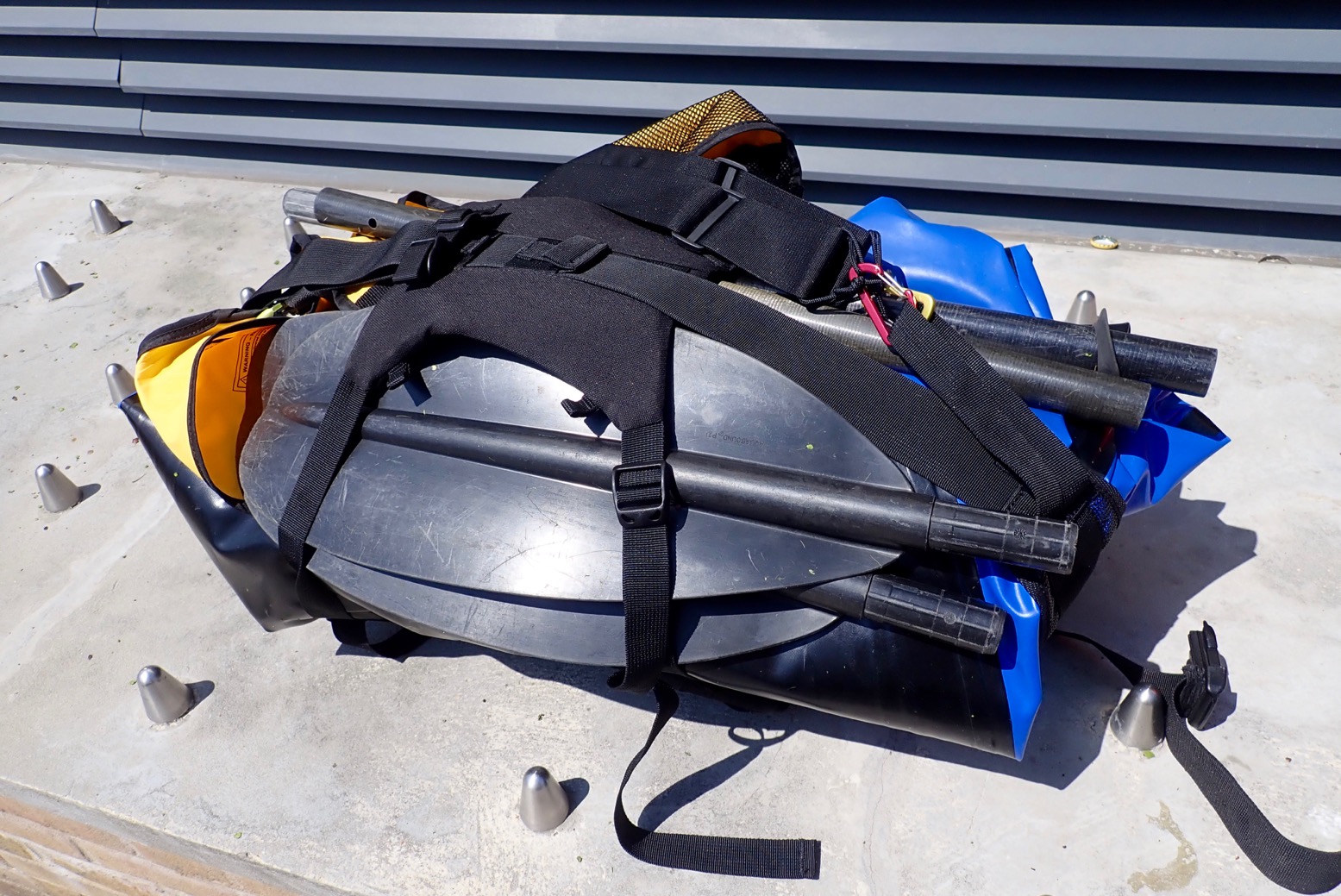
I set off to walk upstream along the Thames for a bit.
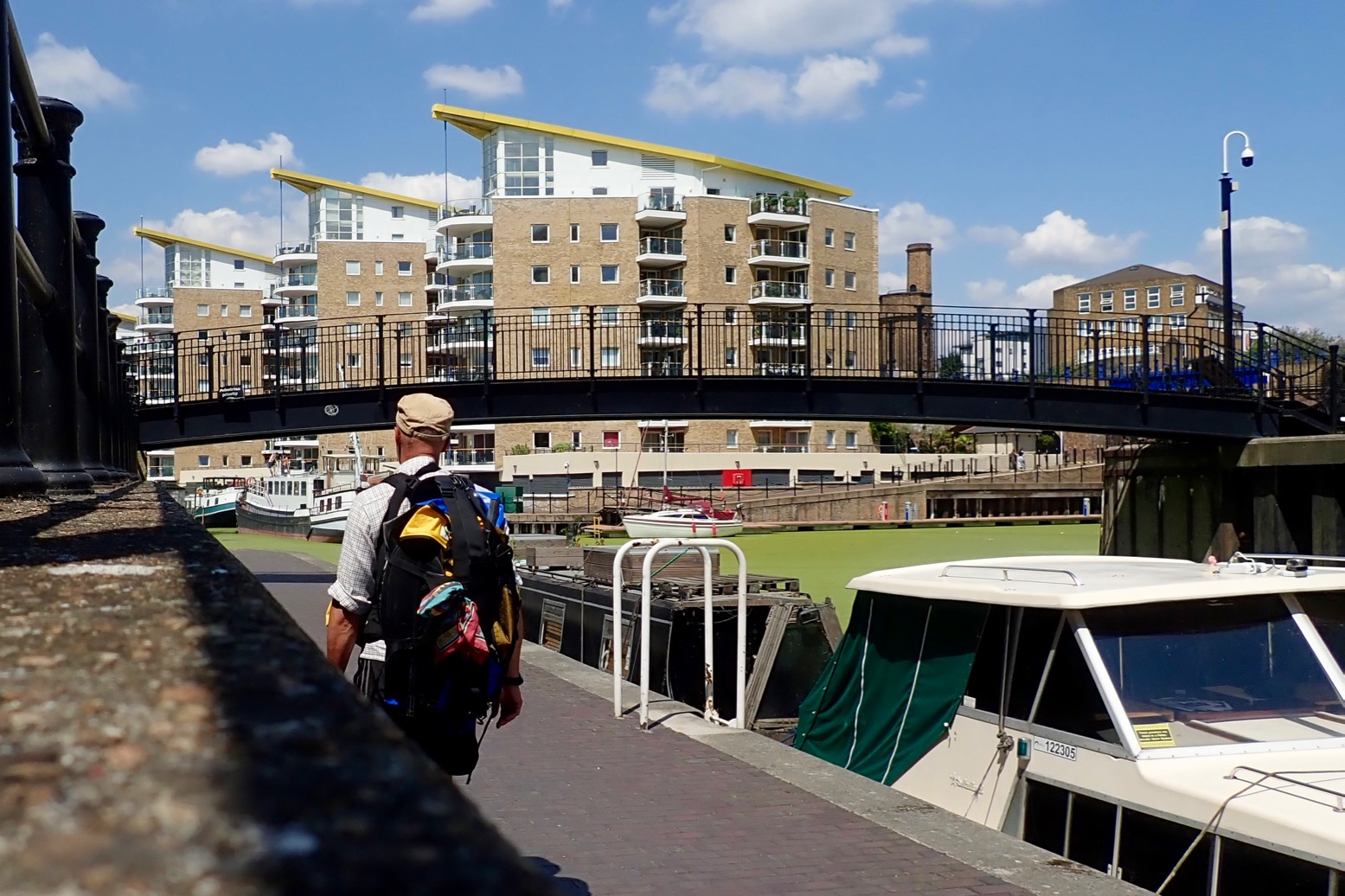
By Chris Scott, author of Packrafting: A Beginner’s Guide
Originally published on his website